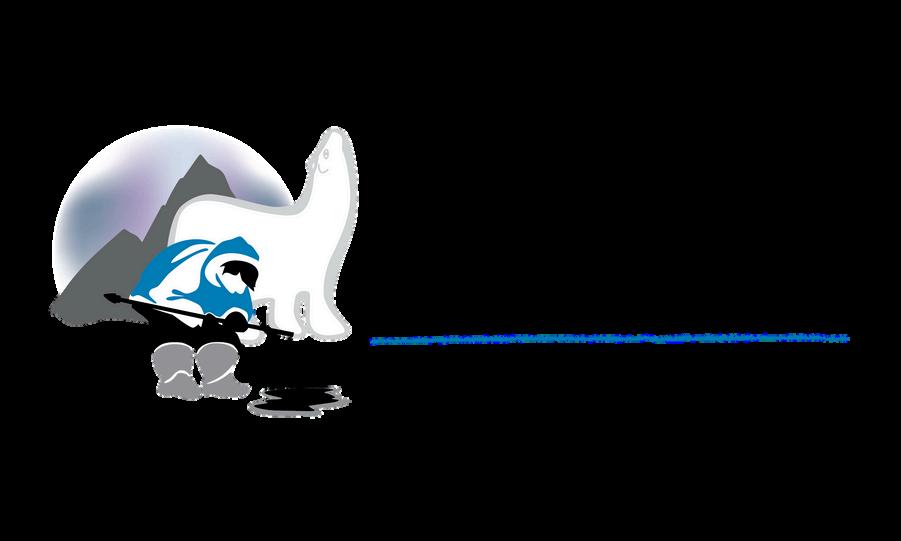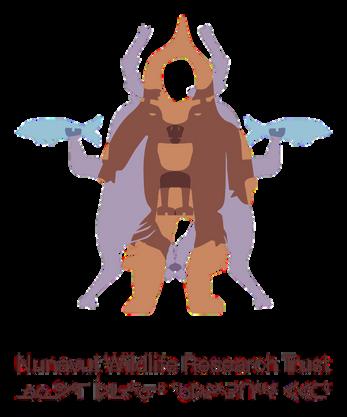

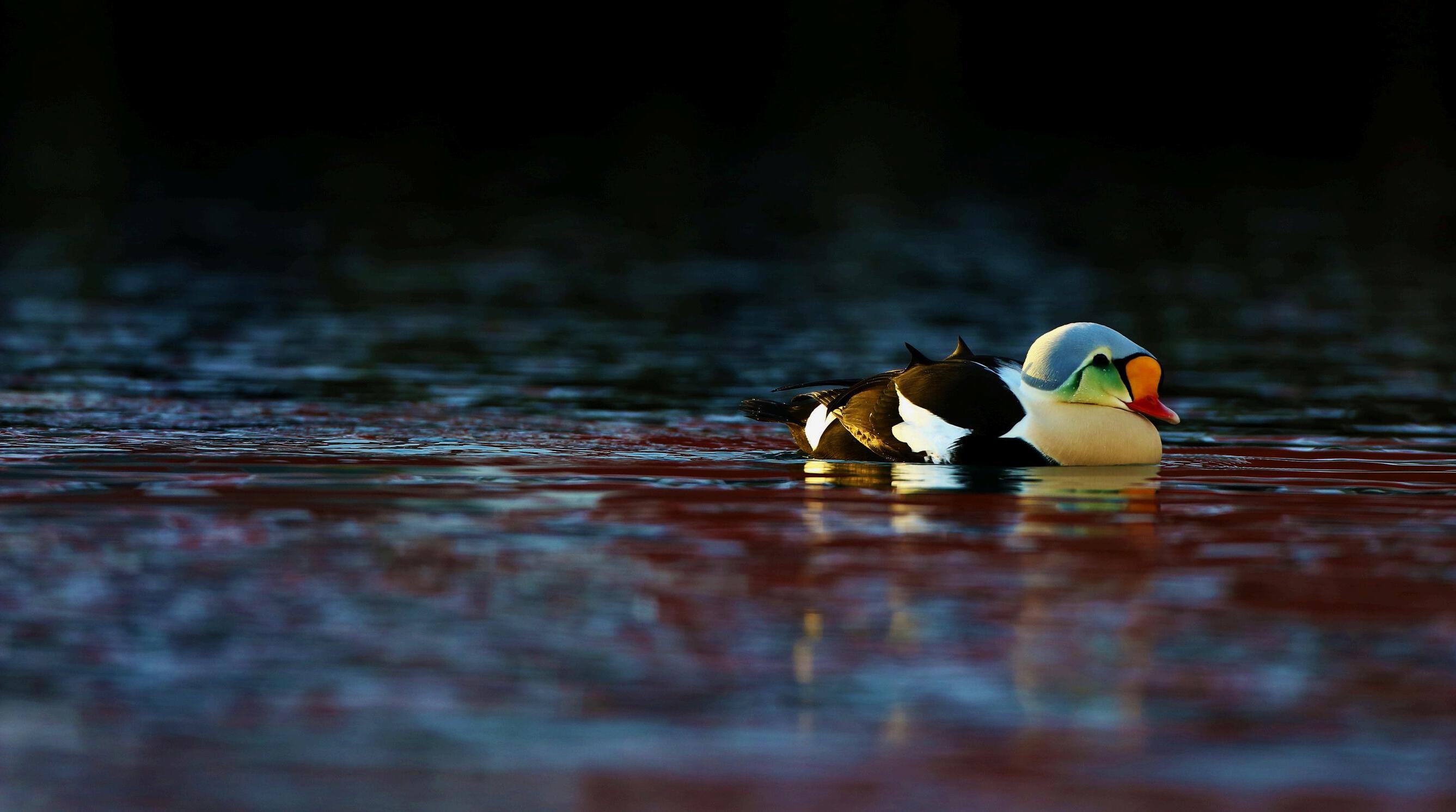

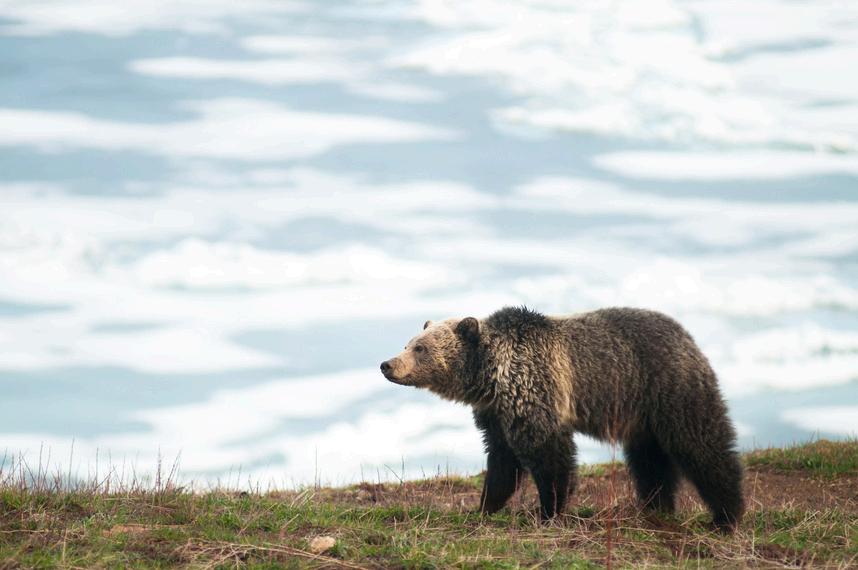
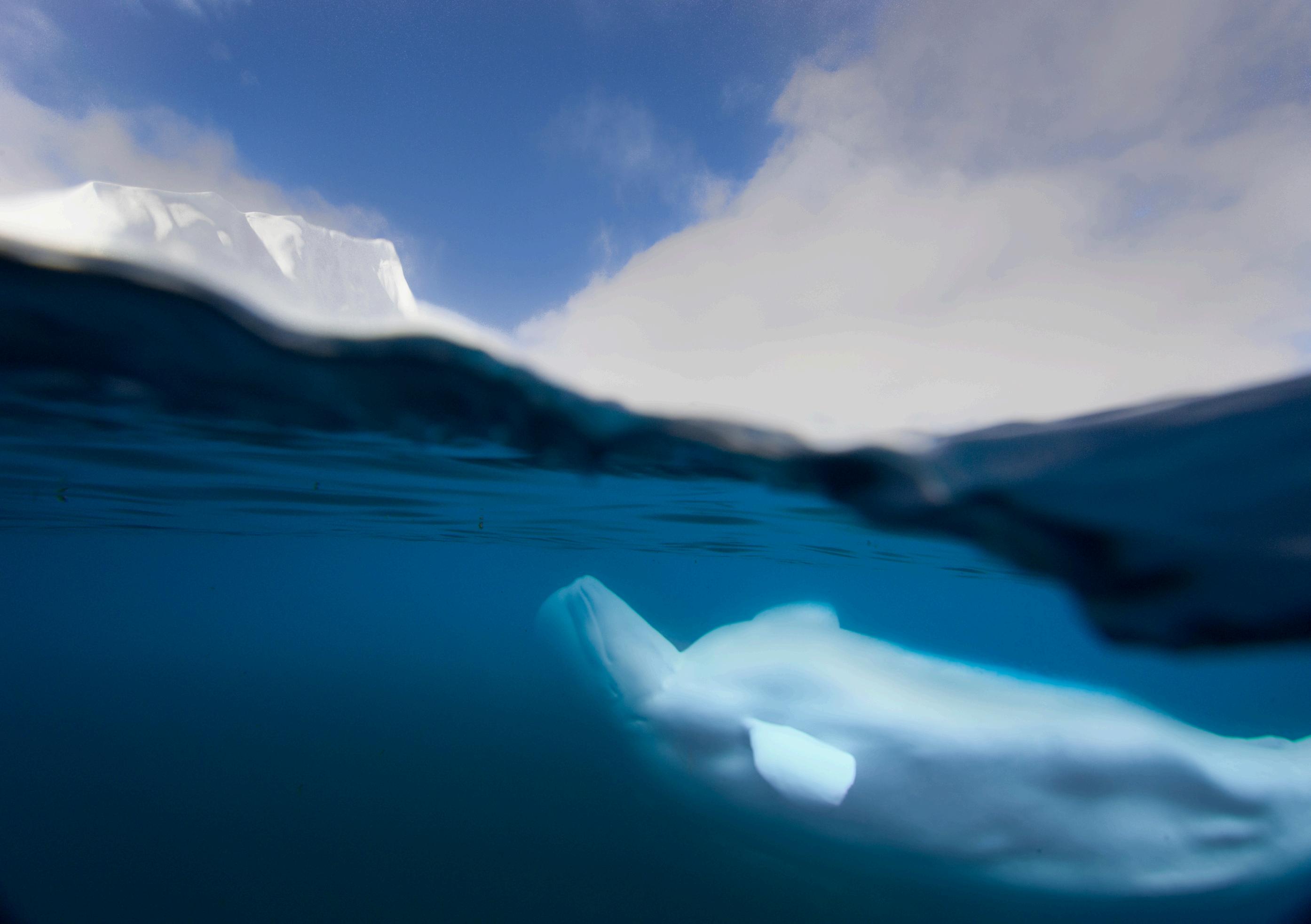







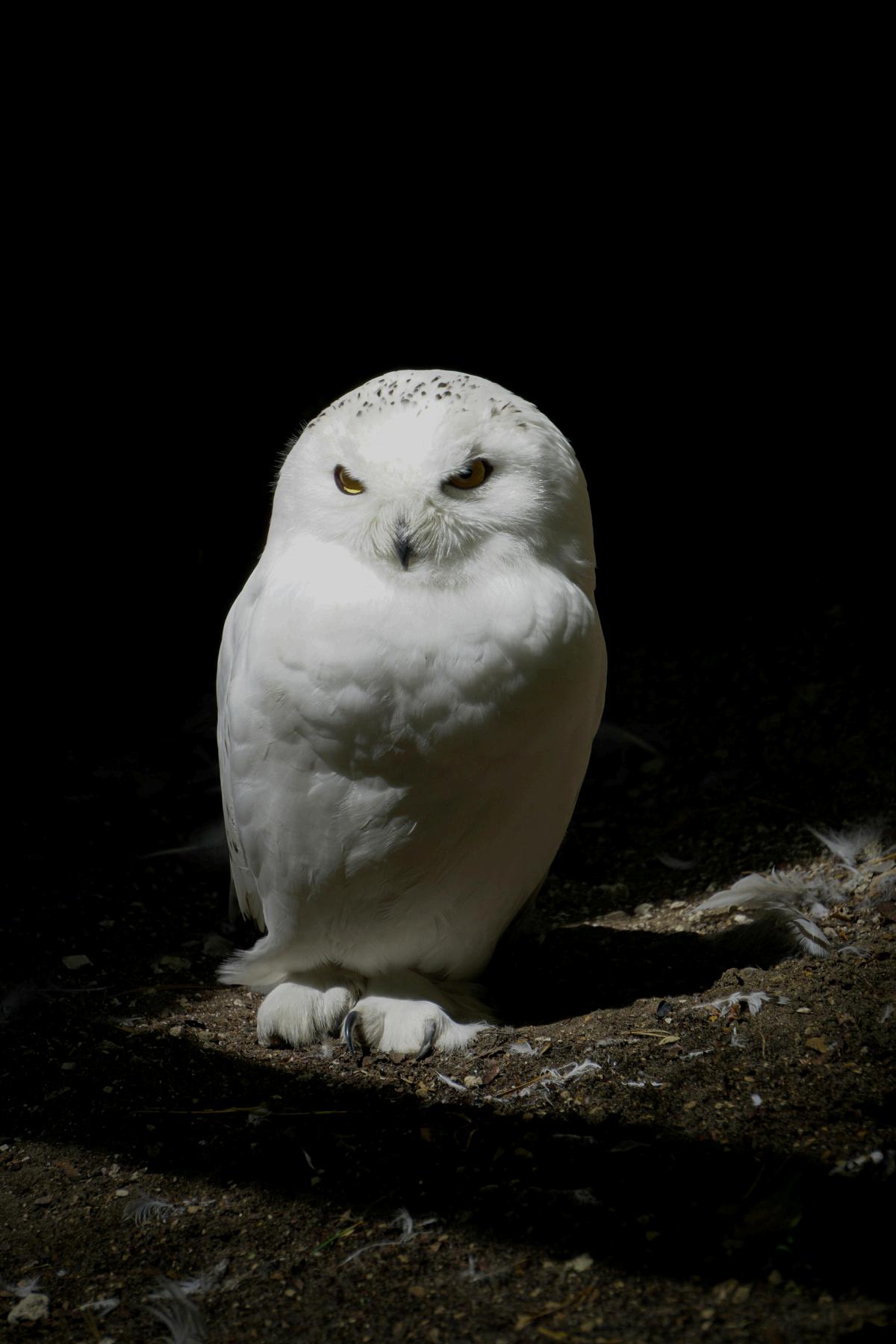

The NunavutWildlife ResearchTrust (NWRT orTrust), which is administered by the NunavutWildlife Management Board (NWMB) provides funding for government departments to carry out wildlife research in Nunavut that addresses the priorities of the NWMB and Inuit TheTrust provides an annual allocation to address wildlife research priorities established by NWMB and identified through regional wildlife priority workshops in the three regions of Nunavut
Research is necessary to ensure that wildlife resources are harvested in a knowledgeable and sustainable way so that Nunavummiut can continue the harvesting that is so essential to their way of life The NWMB has a lead role to play in this area and is committed to making wildlife research responsive to the needs and concerns of the people of Nunavut
Each year in December, theTrustees of the NWRT determine the amount of funding that will be available in each funding period based on the performance of theTrust The NWRT responsibly manages theTrust to ensure that the funds continue to grow and are available for wildlife research over the long term
ᓄᓇᕗᒻᒥᐆᒪᔪᓕᕆᔨᕐᔪᐊᒃᑯᑦᖃᐅᔨᓴᕈᑎᒃᓴᓂᒃᐸᐸᑦᑎᔩᑦ (ᐸᐸᑦᑎᔨᒃᑯᑦ),
ᑕᐃᒃᑯᓄᖓᓄᓇᕗᒻᒥᐆᒪᔪᓕᕆᔨᕐᔪᐊᒃᑯᑦᑲᑎᒪᔨᖏᓄᑦ (ᐆᒪᔪᓕᕆᔨᕐᔪᐊᒃᑯᑦ)
ᑮᓇᐅᔭᒃᓴᓂᒃᓯᕙᖕᒪᑕᒐᕙᒪᒃᑯᑦᐃᖃᓇᐃᔭᕐᕕᒐᓴᖏᓐᓄᑦᑐᕌᖓᔪᓂᒃᐆᒪᔪᓕᕆᓂᕐᒥᒃ ᖃᐅᔨᓴᖃᑦᑕᕐᓂᖅᓄᓇᕗᒻᒥᒪᓕᒃᑐᓂᒃᓯᕗᓪᓕᐅᔾᔭᐅᖁᔭᐅᓂᖏᓐᓂᒃᐆᒪᔪᓕᕆᔨᕐᔪᐊᒃᑯᑦ ᑲᑎᒪᔨᖏᓐᓄᑦ, ᐃᓄᖕᓄᓪᓗ ᐸᐸᑦᑎᔨᒃᑯᑦᑐᓂᓯᓲᑦᐊᕐᕌᒍᑕᒫᖅ ᐊᐃᑦᑐᓯᐊᖅᑖᕆᔭᐅᓂᐊᖅᑐᓂᒃᑮᓇᐅᔭᓂᒃᐊᑐᖅᑕᐅᓂᐊᖅᑐᓂᒃᐆᒪᔪᓕᕆᓂᕐᒥᒃ ᖃᐅᔨᓴᖅᑕᐅᓂᕐᒧᑦᓯᕗᓪᓕᐅᑎᑕᐅᕙᒃᑐᓄᑦ, ᒪᓕᒃᑐᓂᒃᐃᓕᑕᕆᔭᐅᓯᒪᔪᓂᒃ
ᐆᒪᔪᓕᕆᔨᕐᔪᐊᒃᑯᓐᓄᑦᐊᒻᒪᓗᐊᕕᒃᑐᖅᓯᒪᓂᖏᓐᓂᐆᒪᔪᓕᕆᓂᕐᒧᑦᓯᕗᓪᓕᐅᔾᔭᐅᖁᔭᐅᔪᓂᒃ ᑕᒪᐃᓐᓂᒃᐱᖓᓱᓂᒃᓄᓇᕗᑦᐊᕕᒃᑐᖅᓯᒪᓂᖏᓐᓂ
ᖃᐅᔨᓴᖅᑕᐅᖃᑕᕆᐊᖃᓱᖑᖕᒪᑕᐅᔾᔨᖅᑐᑦᑎᐊᕐᓂᕐᒧᑦᐆᒪᔪᐃᑦᐱᑕᖃᕐᓂᖏᑦ ᐊᖑᓇᓱᒃᑕᐅᑎᐊᕈᓐᓇᕆᐊᖃᕐᓂᖏᓐᓄdfdᑦᖃᐅᔨᒪᑦᑎᐊᖃᑦᑕᖅᑐᓄᑦᐊᒻᒪᓗ
ᐱᑕᖃᖅᑎᑦᑏᓐᓇᕈᓐᓇᕐᓂᐊᖅᑐᓄᑦ, ᑕᐃᒪᒃᓄᓇᕗᒻᒥᐅᑦᐊᖑᓇᓱᒍᓐᓇᖃᑕᐃᓐᓇᕐᓂᐊᕐᒪᑕ, ᐊᑑᑎᖃᕐᔪᐊᖅᑐᓂᒃᐃᓄᓯᕆᔭᖏᓐᓄᑦ ᐆᒪᔪᓕᕆᔨᕐᔪᐊᒃᑯᑦᓯᕗᓪᓕᐅᖅᑎᐅᕙᒃᑐᑦᑕᒪᒃᑯᓂᖓ ᐊᐅᓚᑕᐅᓂᖏᓐᓂᒃᐊᒻᒪᓗᐱᓂᐊᕐᓂᖃᖅᓱᑎᒃᐆᒪᔪᓕᕆᓂᕐᒥᒃᖃᐅᔨᓴᖃᑦᑕᕐᓂᖅᒪᓕᒃᑐᓂᒃ ᐃᓄᐃᑦᐱᔭᕆᐊᖃᖅᑕᖏᓐᓂᐊᒻᒪᓗᐃᓱᒪᓘᑎᒋᔭᖏᓐᓂᒃᓄᓇᕗᒻᒥ
ᐊᑐᐃᓐᓇᐅᔪᖃᕐᓂᐊᕐᒪᖓᑕᐊᑐᓂᑮᓇᐅᔭᒃᓴᓂᒃᑕᐅᕝᕕᐅᕙᒃᑐᒪᓕᒃᑐᓂᒃ
ᐊᑐᖅᓱᑎᒃᐊᐅᓚᑦᑎᕙᒃᑐᑦᐅᔾᔨᖅᑐᑦᑎᐊᕐᓂᕐᒧᑦᑮᓇᐅᔭᒃᓴᐃᑦ
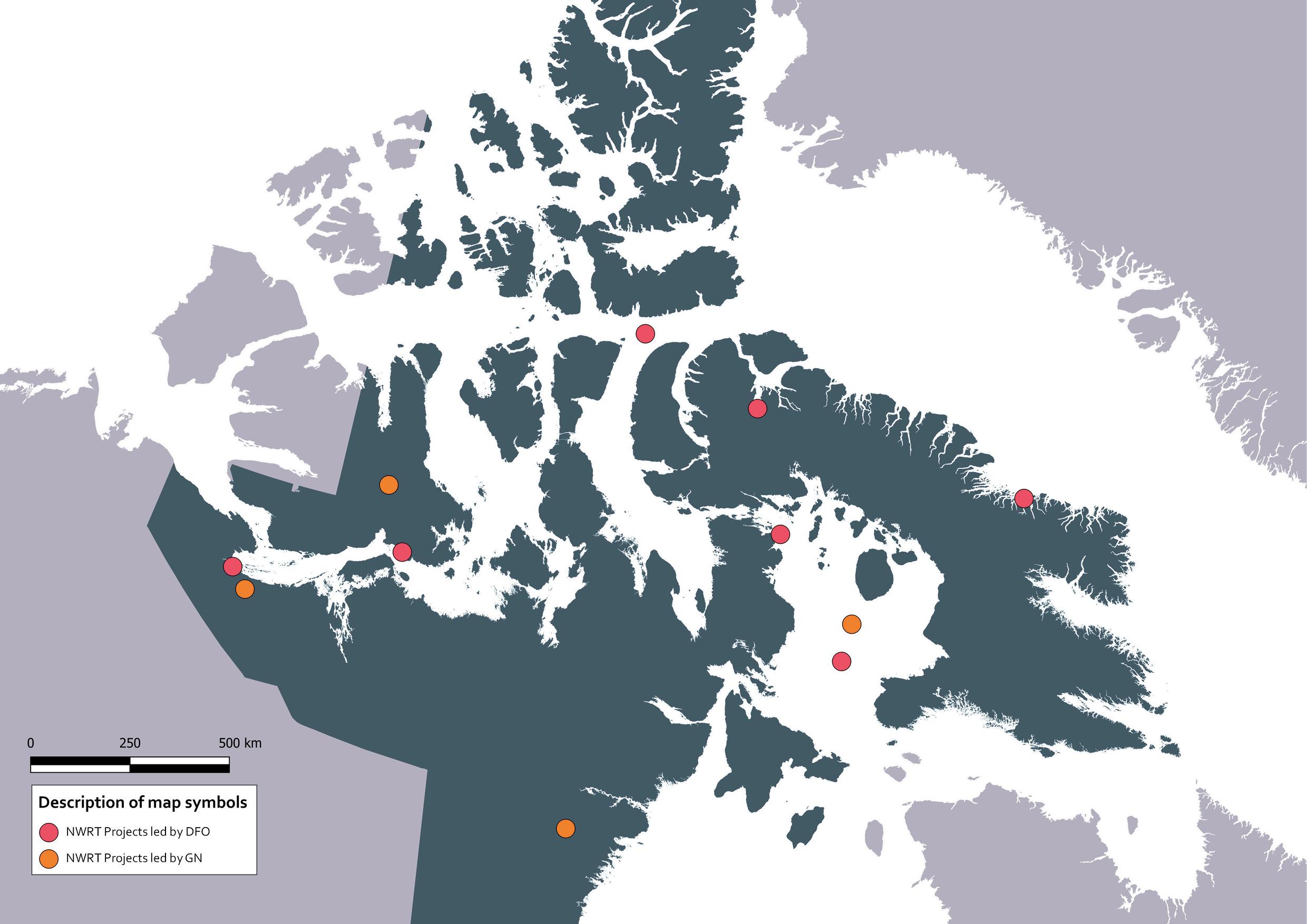
4 projects in the Kitikmeot Region
4
1 project in the Kivalliq Region
Percentage of funds given to each institution

Total $714,300 58% 42%
6 projects in the Qikitani Region
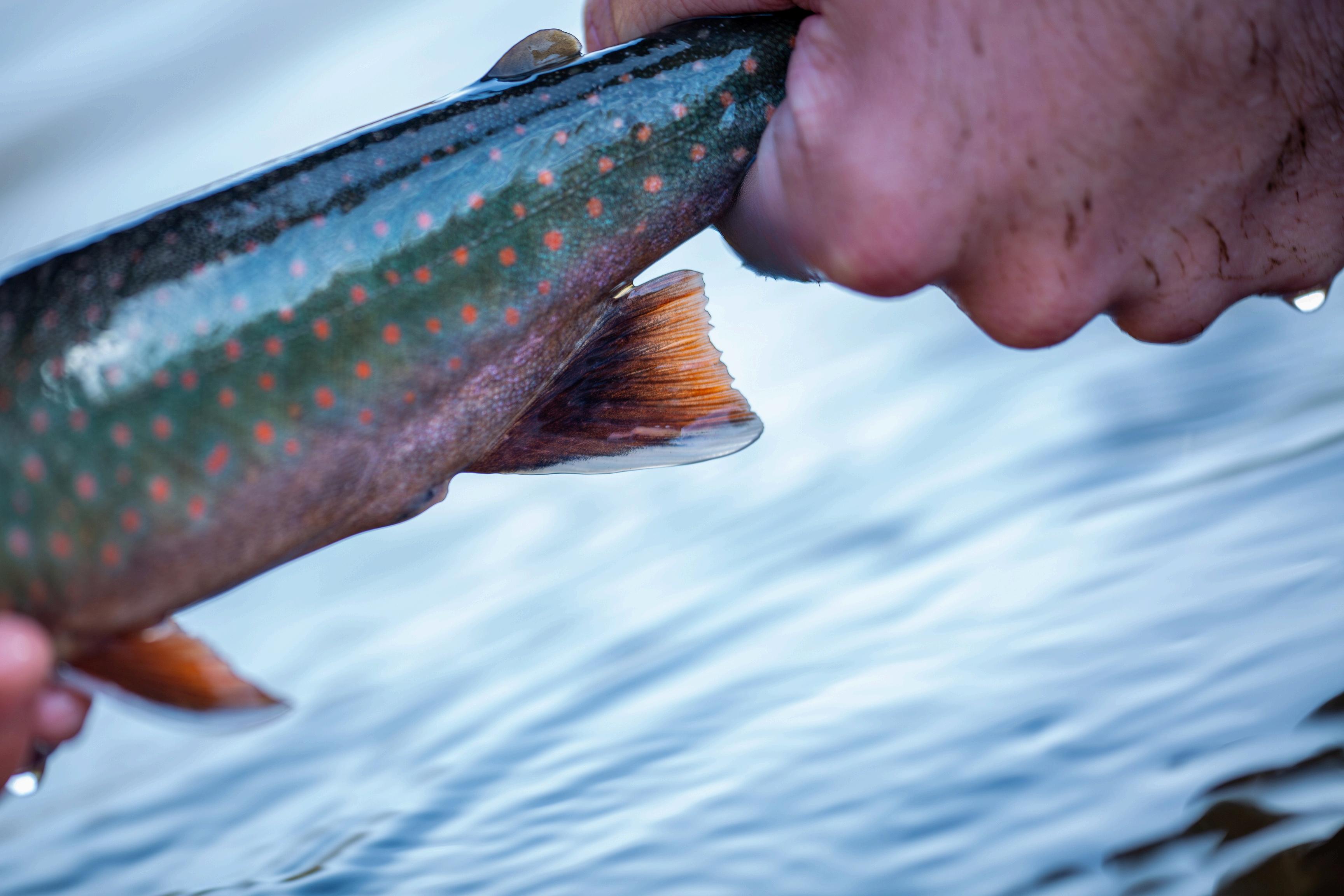
Tracey Loewen - Fisheries and Oceans Canada
ᐅᕙᙵᑦ 2019 ᐅᕗᖓ 2023, ᖁᖅᓗᖅᑑᖅᒥᐊᖑᓂᐊᕐᑏᑦᑲᑐᔾᔨᖃᑎᒌᖏᑦᐊᖑᓇᓱᒃᑐᓕᕆᔨᑦᐃᑲᔪᓚᐅᕐᑐᑦᐅᑯᓂᖓ
ᓯᓚᑦᑐᓴᕐᕕᒃᔪᐊᖅᕗᐊᑐᕐᓘᒥᐊᒻᒪᓗᐃᒪᕐᒥᐅᑕᓕᕆᔨᑦᑲᓇᑕᒥᖃᐅᔨᓴᕐᑐᒋᑦᐃᖃᓗᒃᐲᑦ, ᐆᒐᐃᑦ, ᐊᒻᒪᓗᐅᑭᐅᕐᑕᕐᑐᒥ ᐆᒐᐃᑦᑕᐃᑲᓂ Coronation Gulf
ᖃᐅᔨᓴᕐᓂᖅᓇᓗᓇᐃᕐᓯᓚᐅᕐᑐᖅᒪᒡᕈᐃᓂᒃᐃᖃᓗᒃᐱᓐᓂᒃ ᖁᖅᓗᖅᑑᖅᑰᖓᓂ, ᐃᖃᓗᒃᐱᓐᓂᒃᑕᐃᒪᖓᓕᒫᖅᓂᕿᑦᓴᒥᓂᒃᐊᖑᓇᓱᒃᐸᑎᓪᓗᒍ, ᐊᒻᒪᓗᐊᓚᒃᑲᐃᓪᓗᓂᓇᓗᓇᙱᑦᑐᓂᒃ ᓇᔪᒐᖏᓐᓂᒃᐊᒻᒪᓗᑎᒥᖏᑕᖃᓄᐃᓐᓂᖏᓐᓂᒃ ᐆᒐᕐᓂᒃᖃᐅᔨᓴᕐᓂᖅᐊᓚᒃᑲᐃᓚᐅᕐᑐᖅᐃᓄᐃᓴᓪᓕᕙᓪᓕᕐᓂᖏᓐᓂᒃ
ᓱᕙᐃᑦᐃᓅᓪᓗᑎᒃᐊᖏᓂᖏᓐᓂᒃᐊᑕᔪᑦᐊᕙᑖᑕᖃᓄᐃᓐᓂᖓᓂᒃ ᐊᖑᓇᓱᒃᑐᓕᕆᔨᑦᑐᑦᓯᕋᕐᑐᑦᐃᒫᒃᖃᐅᔨᓴᕐᑏᑦ ᖃᐅᔨᓴᒃᑲᓐᓂᖁᓪᓗᒋᑦᓱᕙᐃᔭᕐᕕᓐᓂᒃᐊᒻᒪᓗᐅᑭᐅᒃᑯᑦᓇᔪᒐᕐᓂᒃᐊᑐᕐᓂᖏᑦᐃᖃᓗᐃᑦᐊᒻᒪᓗᐃᖃᓗᒃᐲᑦᖁᖅᓗᖅᑑᖅ ᑰᖓᓂ, ᐊᒻᒪᓗᑦᑕᐅᖅᑕᕆᐅᕐᒥᓅᑦᑕᕐᓂᖏᑦ, ᐊᒻᒪᓗᐊᑐᕐᓗᒋᑦᓄᓇᓖᑦᓇᒻᒥᓂᖅᐃᖃᓗᓐᓂᒃᓄᐊᑦᓯᓂᖏᑦ ᐊᖏᓪᓕᒋᐊᕐᓗᒍᖃᐅᔨᒪᓂᖅᑕᕆᐅᕐᒥᐃᖃᓗᓐᓂᒃ, ᐃᓚᐅᓗᑎᒃ "ᐱᑕᖃᕋᔪᐃᑦᑐᑦ" ᐊᒻᒪᓗᓄᑖᑦᐃᖃᓗᐃᑦ, ᒪᑯᐊ Bering ᓂᐱᔭᐃᑦᐊᒻᒪᓗᐸᓯᕕᒃᒥᓵᓪᒪᓐ ᑖᓐᓇᑲᒪᒋᔭᖅᑮᓇᐅᔭᖃᕐᑎᑕᐅᓯᒪᔪᖅᐅᕘᓇ NWRT ᐊᓂᒍᕐᑐᒥ
From 2019 to 2023, the Kugluktuk Hunters andTrappersOrganization (HTO) collaborated with the University ofWaterloo and Fisheries andOceansCanada to study char, Greenland cod, andArctic cod inCoronationGulf near Kugluktuk Research confirmed two char species in theCoppermine River, with DollyVarden predominating subsistence harvests, and revealed distinct habitats and physical traits Cod studies showed reduced larval hatch sizes linked to environmental factors The HTO requested that the researchers further examine the spawning and overwintering habitat use ofArcticChar and DollyVarden in theCoppermine River, as well as their marine movements, and to use communitybased fish collections to increase knowledge on marine fishes, including “unusual” and new species of fishes, such as Bering wolffish and Pacific salmon he proposed phase 2 will investigate the topics raised by the HTO This project has been funded by the NWRT in the past

ᓄᓇᓖᑦᓇᒻᒥᓂᖅᐃᒪᕐᒥᐅᑕᕐᓂᐊᒐᕐᓂᒃᖃᐅᔨᒪᒐᓱᐊᕐᓂᖅᕿᑭᕐᑕᕐᔪᐊᖅᒥ ᐃᖃᓗᓐᓂᐊᕐᕕᓐᓂᒃ
ᕌᔅᑖᓪᒪᓐ - ᐃᖃᓗᓕᕆᔨᑦᐃᒪᕐᒥᐅᑕᓕᕆᔨᓪᓗᑲᓇᑕᒥ
RossTallman - Fisheries and Oceans Canada
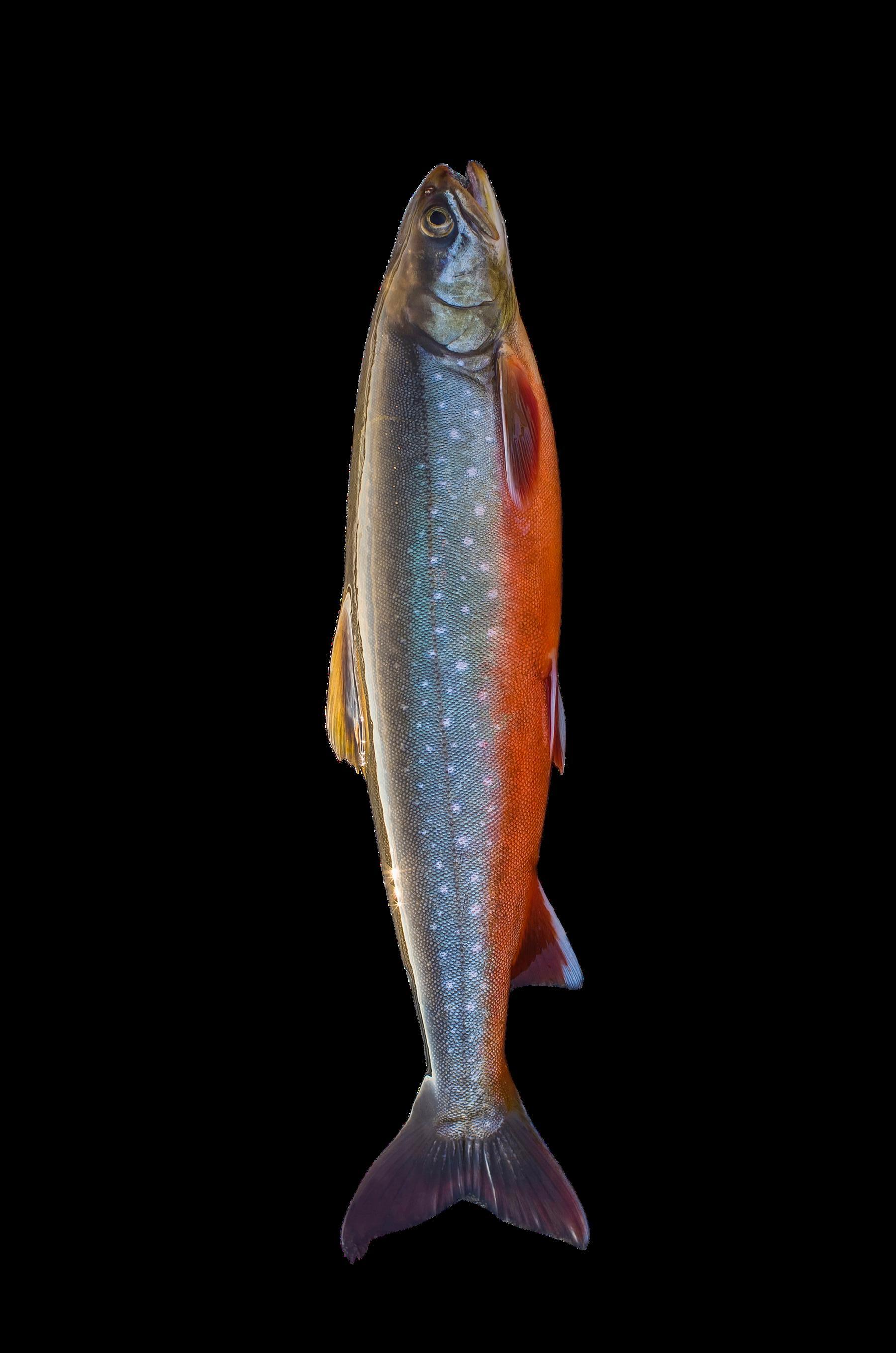
ᕿᑭᕐᑕᕐᔪᐊᖅᖃᐅᔨᓯᒪᔪᑦᐊᓯᔾᔨᕈᑎᓂᒃᐃᖃᓗᒃᐲᑦᐊᖏᓂᖏᓐᓂᒃᐊᒻᒪᓗ
ᐊᕙᑕᓂᒃᑮᓇᐅᔾᔭᓴᕐᑐᓂᔨᑦᑲᓇᑕᒥᐃᑲᔪᖁᓪᓗᒋᑦᖃᐅᔨᒪᒐᓱᐊᕐᓗᒋᑦ ᐃᖃᓗᒃᐲᑦᐊᑕᐅᓯᕐᓃᖔᕐᑐᑦ ᑕᐃᒪ, ᓄᓇᓖᑦ ᓇᒻᒥᓂᖅ
ᖃᐅᔨᒪᒐᓱᐊᕐᓂᖏᓐᓄᑦᐱᑕᓕᒃ, ᑕᒫᓂᓄᓇᓕᓐᓂᐃᖃᓗᓐᓂᐊᕐᑏᑦ
ᓄᐊᑦᓯᕙᓪᓗᑎᒃᐃᖃᓗᓐᓂᐊᒐᕐᓂᒃᐊᑐᕐᑐᑦᑎᑎᕋᕐᓯᒪᔪᑦᐅᑯᓄᖓ ᐃᒪᕐᒥᐅᑕᓕᕆᔨᑦᑲᓇᑕᒥᕿᒥᒡᕈᒐᑦᓴᖏᓐᓂᒃ ᑎᑎᕋᕐᓯᒪᔪᑦᐃᓚᖃᕐᓂᐊᕐᑐᑦ ᐃᖃᓗᐃᑦᐊᖏᓂᖏᓐᓂᒃ
ᐃᖃᓗᓐᓂᐊᕐᑏᑦᖃᐅᔨᓯᒪᔭᖏᓐᓂᒃᐊᖑᓇᓱᒃᑐᑎᒃᑖᒃᑯᓇᓂᓇᓗᓇᐃᕐᑕᓂ
ᑕᒪᓐᓇᖃᐅᔨᓴᕐᓂᖅᐱᑕᖃᕐᓂᐊᕐᑐᖅᓇᓗᓇᐃᒃᑯᑕᕐᓂᒃ
ᐊᑕᐅᓯᕐᓃᖔᕐᑐᑦᖃᓄᐃᒻᒪᖔᑕᐊᒻᒪᓗᖃᑦᓯᐅᓂᖏᑦ ᑕᒪᓐᓇ ᐊᓪᓗᕆᐊᕈᑕᐅᔪᖅᑐᕌᕐᑐᒍᖃᐅᔨᓴᕐᓂᖅᑲᑎᑦᑐᒋᑦᐊᔪᙱᑕᑦᐱᐅᓂᕐᒥᒃ ᐃᖃᓗᐃᑦᐊᑕᐅᓯᕐᓃᖔᕐᑐᑦ, ᐊᒻᒪᓗᐋᕿᓱᕐᑕᐅᓂᖓ
ᓄᖒᑦᓯᕙᓪᓕᐊᖏᓪᓗᓂᐃᖃᓗᓐᓂᐊᒐᕐᓂᒃᐊᐅᓚᑦᓯᓂᕐᒧᑦᐸᕐᓇᒍᑏᑦ ᑖᓐᓇᑲᒪᒋᔭᖅᑮᓇᐅᔭᖃᕐᑎᑕᐅᓯᒥᒪᔪᖅᐅᕘᓇ NWRT ᐊᓂᒍᕐᑐᒥ
Qikiqtarjuaq has observed changes inArctic char size and ecology in their commercial fishing areas over the years The community requested that Fisheries andOceansCanada assist in monitoring theArctic char stocks Thus, a community-based monitoring program will be established, in which local fishers will collect fishery-dependent data for Fisheries andOceans Canada to analyze Data will include fish size, weight, age structures, sex, maturity, catch and effort, as well as Inuit Qaujimajatuqangit about the fishers' experiences harvesting in those particular areas This study will provide indicators of stock health and relative abundance It is a step towards evaluating total allowable harvest for char stocks, and development of sustainable fisheries management plans This project has been funded by the NWRT in the past
ᐋᕿᑦᓱᐃᓂᖅᓄᓇᓕᑦᑲᒪᒍᓐᓇᕐᓂᖏᓐᓂᒃᐅᒥᐊᕐᔪᐊᒥᒃᐅᕚᔾᔭᐃᑯᑏᑦ
ᑭᒻᐳᕐᓕᕼᐊᐅᓚᓐᑦ - ᐃᖃᓗᓕᕆᔨᑦᐃᒪᕐᒥᐅᑕᓕᕆᔨᓪᓗᑲᓇᑕᒥ
Kimberly Howland - Fisheries and Oceans Canada
ᐅᕚᔾᔭᐃᒃᑯᑏᑦᐃᒪᐃᑦᑯᕕᑎᑕᐅᓂᖏᑦᐅᒥᐊᕐᔪᐊᓂᒃ ᓇᓗᓇᐃᕐᑕᐅᓯᒪᔪᖅᐱᔾᔪᑕᐅᓗᐊᕆᐊᖏᑦᐃᒪᕐᒥ
ᑕᒫᓂᒥᐅᑐᖃᐅᖏᑦᑐᑦᐆᒪᔪᑦᑕᒪᐅᖔᕆᐊᖏᑦ
ᑖᒃᑯᐊᐆᒪᔪᑦᐅᓗᕆᐊᓇᕐᑐᑦᑕᒫᓂᒥᐅᑐᖃᕐᓄᑦ
ᐅᑭᐅᕐᑕᕐᑐᒥᑕᕆᐅᑉᐊᕙᑖᓄᑦ ᐊᑦᑐᐃᓂᖏᑦ
ᐅᒥᐊᕐᔪᐊᑦ, ᐃᓚᐅᓪᓗᑎᒃᑕᒫᓂᒥᐅᑐᖃᐅᖏᑦᑐᑦ
ᐆᒪᔪᑦᑕᒪᐅᙶᓂᖏᑦ, ᐅᖃᐅᑕᐅᓚᐅᕐᑐᑦ
ᐃᓱᒫᓗᓐᓇᓗᐊᕆᐊᖏᑦᓄᓇᓕᓐᓄᑦᑕᐃᑲᓂᓄᓘᔭᓐᓂ
ᐅᔭᕋᑦᑕᕐᕕᒃᒥᒃᑲᒪᒋᔭᖅ 2 ᐊᕙᑖᓂᒃᐊᑦᑐᐃᓂᖓᓄᑦ
ᐅᓂᒃᑳᑦᕿᒥᒡᕈᔭᐅᑎᓪᓗᒋᑦ ᑖᓐᓇᑲᒪᒋᔭᒻ
ᐱᓕᕆᐊᖑᓂᐊᕐᑐᖅᐃᑲᔪᕐᑎᒋᓗᒋᑦᐊᑦᑐᕐᑕᑦᓄᓇᓖᑦ ᓄᐊᑦᓯᓗᓂᐅᕚᔾᔭᐃᒃᑯᑎᓂᒃᖃᐅᔨᓴᕋᑦᓴᓂᒃ ᐅᒥᐊᕐᔪᐊᓂᒃᑎᑭᑦᑐᓂᒃᑲᖏᕐᑐᕋᓚᒧᑦ ᑲᒪᒋᔭᖅ
ᑐᑭᓯᒍᑕᐅᒐᓱᐊᕐᑐᖅᐆᒪᔪᕐᓄᑦᐅᓗᕆᐊᓇᕐᓂᖏᓐᓂᒃ ᐊᓚᒃᑲᕐᑐᑦᓄᓘᔭᓐᓂᐅᔭᕋᑦᑕᕐᕕᒃᑲᒪᒋᔭᐅᑎᓪᓗᒍ
ᐅᒥᐊᕐᔪᐊᑦᐊᒻᒪᓗᐋᕿᓱᕐᓗᒋᑦᓄᓇᓖᑦᑲᒪᒍᓐᓇᕐᓂᖏᑦ ᐊᒻᒪᓗᑲᒪᒍᑎᖏᑦᐃᑉᐱᒋᓗᒍᑲᔪᓯᓂᓕᒻᒥᒃ ᖃᐅᔨᒪᒐᓱᐊᕐᓂᖅᐅᓗᕆᐊᓇᕐᑐᓂᒃᐊᒻᒪᓗ
ᐊᐅᓚᑦᓯᒍᑏᑦᒪᓕᑦᓯᐊᕐᒪᖔᑕᐅᕚᔾᔭᐃᑯᑏᑦ
ᑯᕕᑎᑕᐅᑎᓪᓗᒋᑦᑲᖏᕐᑐᕋᓚᒥᐊᒻᒪᓗᐃᓱᒪᒋᔭᑦ ᓯᕗᓂᑦᑎᓐᓂᑐᓚᑦᑕᕐᕖᑦ, ᒪᑯᐊᑲᖏᕐᑐᐊᕐᔪᒃᒥ

Ballast water discharge from vessels has been identified as a primary source for aquatic nonindigenous species introductions These species pose threats to the nativeArctic marine ecosystem The impacts of shipping, including non-indigenous species introductions, were raised as a primary concern by communities during the Baffinland Iron Mines Phase 2 Environmental Impact Statement review This project will work collaboratively with affected communities to collect ballast water samples from ships arriving at Milne Port The project aims to understand the biological risks posed by Baffinland Iron Mines Project shipping and develop local capacity and tools to enable ongoing monitoring of risk and regulatory compliance of ballast water discharges at Milne Port and anticipated future ports, such as Steensby Inlet
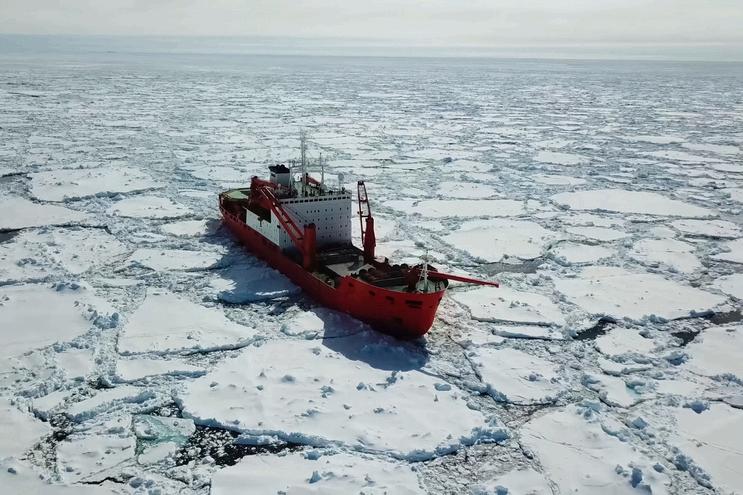
ᐅᒥᐊᕐᔪᐊᑦᐃᖏᒡᕋᔭᓐᓂᖏᑕ
ᐊᑦᑐᐃᓂᖏᑦᐃᖃᓗᓐᓂᒃᓂᕿᑦᓴᐅᔪᓂᒃ ᐊᒻᒪᓗᐊᕙᑖᑕᐱᒻᒪᕆᐅᓂᖓᓂ
shipping traffic impacts on fishes of subsistence and ecological importance
ᓕᐊᔅᕼᐊᐅᕆᔅ
Les Harris - Fisheries and Oceans Canada
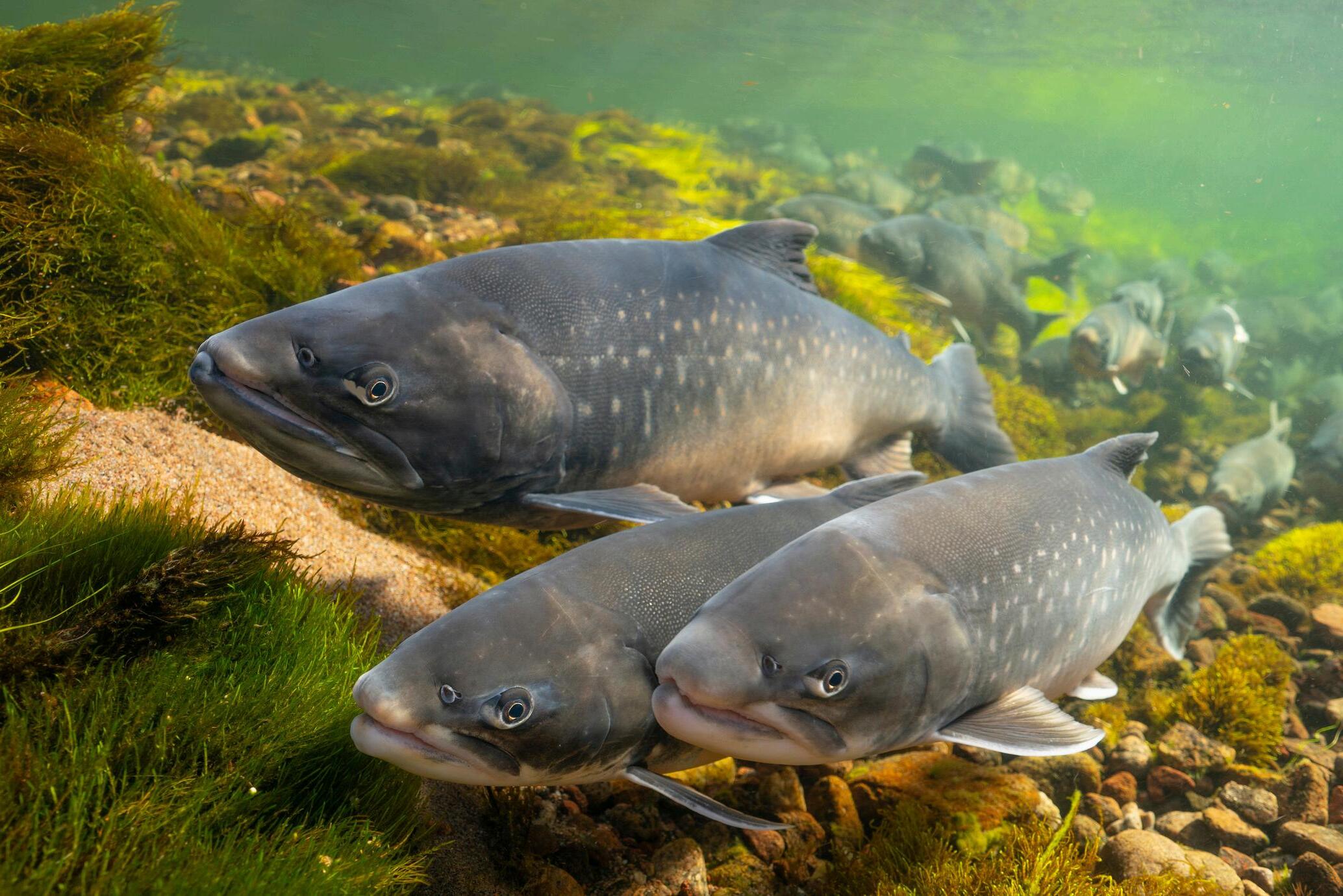
ᑕᐃᒪᐅᑭᐅᕐᑕᕐᑐᖅᐅᖂᓯᕙᓪᓕᐊᒻᒪᑦᐱᓪᓗᒍᓯᓚᐅᑉᐊᓯᔾᔨᕐᓂᖓ, ᐊᒥᓱᕈᕐᐸᓪᓕᐊᓪᓗᑎᒃᐅᒥᐊᕐᔪᐊᑦᐊᐅᓚᓂᖏᑦ ᐅᓗᕆᐊᓇᕐᒪᑦᐅᑭᐅᕐᑕᕐᑐᒥᐃᒪᐅᑉᐊᕙᑖᓄᑦ ᑭᓯᐊᓂ, ᖃᐅᔨᒪᓂᖅᖃᓄᖅᐃᖃᓗᐃᑦᐊᑐᓕᕐᓂᐊᕐᒪᖔᑕ ᐊᒥᓱᕈᕐᐸᓕᕐᓂᖏᓐᓄᑦᐅᒥᐊᕐᔪᐊᑦᐃᖏᒡᕌᔪᑦᐊᒻᒪᓗᓂᐱᖁᕐᑐᔪᑦᓱᓕᖃᐅᔨᒪᓇᓗᐊᙱᒻᒪᑦ ᓂᐱᓕᓐᓂᒃᓈᓚᓐᓂᖅ ᐊᑐᕐᑕᐅᓂᐊᕐᑐᖅᖃᐅᔨᒪᒐᓱᐊᕐᓗᒋᑦᓅᑦᑕᕐᓂᖏᑕᐱᐅᓯᖏᑦᐊᒻᒪᓗᓇᔪᒐᕐᒥᓂᒃᐊᑐᕐᓂᖏᑦᐃᖃᓗᒃᐲᑦ, ᐆᒐᐃᑦ, ᐊᒻᒪᓗ ᑲᓇᔪᐃᑦᐃᖃᓗᒃᑑᑦᑎᐊᖅᖃᓂᒋᔭᖓᓂ, ᐊᒻᒪᓗᖃᐅᔨᒐᓱᐊᕐᓗᒋᑦᐊᑦᑐᐃᔪᑦᐅᒥᐊᕐᔪᐊᑦᐊᐅᓚᓂᖏᑦᑖᒃᑯᓂᖓ ᑕᐃᒪ ᑕᕆᐅᒃᑯᑦᐅᒥᐊᕐᔪᐊᑦᐊᒻᒪᓗᓴᓇᔭᐅᕙᓪᓕᐊᔪᑦᐃᓱᒪᒋᔭᐅᒻᒪᑕᐊᒥᓱᕈᕐᐸᓕᕐᓂᐊᕆᐊᖏᑦᓄᓇᕗᑦᒥ, ᑐᓴᕋᑦᓴᑦ ᐊᑐᕐᑕᐅᒍᓐᓇᕐᑐᑦᓯᕗᒐᓂᑦᑎᓐᓂᒥᑭᓪᓕᒋᐊᕐᓗᒋᑦᐊᑦᑐᐃᓂᖏᑦᐊᒥᓱᕈᕐᐸᓪᓕᐊᔪᑦᐃᓄᐃᑦᐊᐅᓚᓂᖏᑦᑖᒃᑯᓇᓂ ᐃᓕᖁᓯᕐᒧᑦᐊᒻᒪᓗᐊᕙᑖᓄᑦᐱᒻᒪᕆᐅᔪᑦᐆᒪᔪᑦ
As theArctic warms due to climate change, increased shipping activities threatenArctic aquatic ecosystems However, knowledge of how fish will respond to increased shipping traffic and noise is still limited Acoustic telemetry will be used to track the fine-scale movement patterns and habitat use ofArctic char,Greenland cod, and fourhorn sculpin in theCambridge Bay area, and examine the effects that shipping activity may have on them As marine shipping and development are expected to increase in Nunavut, the information could be used in the future to minimize the effects of increased human activity on these culturally and ecologically important species

ᐊᓪᓚᙳᐊᒃᑎᒥᖏᑕᖃᓄᐃᓐᓂᖏᑦᐊᒻᒪᓗᐊᑦᑐᐃᓂᖏᑦᐅᒥᐊᕐᔪᐊᑦ
narwhal body condition and impacts of shipping
ᒥᐊᕆᐋᓐᒫᑰ - ᐃᖃᓗᓕᕆᔨᑦᐃᒪᕐᒥᐅᑕᓕᕆᔨᓪᓗᑲᓇᑕᒥ
Marianne Marcoux - Fisheries and Oceans Canada
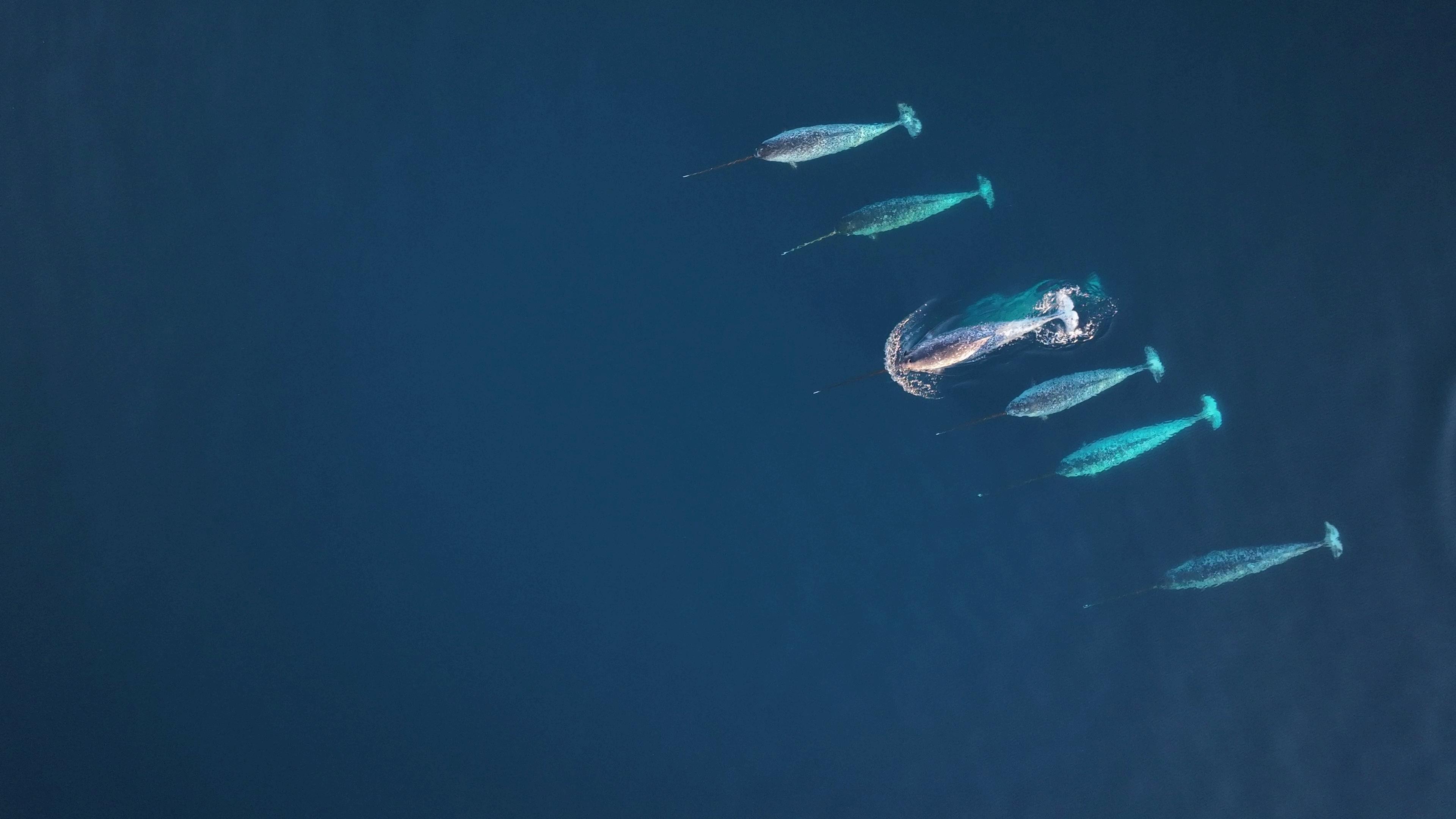
ᐊᓂᒍᕐᑐᓂᐊᒡᕌᒍᓂ, ᐃᓄᐃᓴᓪᓕᕙᓪᓕᕐᓯᒪᔪᑦᖃᑦᓯᐅᓂᖏᑦᑲᖏᕐᑐᕈᓗᒃᒥᐊᓪᓚᙳᐊᑦ ᐊᑕᐅᓯᖅ ᐱᔾᔪᑕᐅᑐᐃᓐᓇᕆᐊᓕᒃᐃᓄᐃᓴᓪᓕᕙᓪᓕᕐᓂᖏᓐᓄᑦᐊᓯᐊᓅᕐᓂᖏᑦᓇᒦᓐᓂᖏᑕᐊᓪᓚᙳᐊᑦᓇᒥᓕᒫᖅᐅᐸᒐᖏᓐᓂ ᐱᔾᔪᑕᐅᓪᓗᑎᒃᐊᒥᓱᕈᕐᐸᓕᕐᓂᖏᑦᐅᒥᐊᕐᔪᐊᑦ ᑖᓐᓇᑲᒪᒋᔭᖅᑲᒪᓂᐅᓂᐊᕐᑐᖅᖃᖓᑕᔫᕋᓚᒃᑯᑦᖃᐅᔨᓴᕐᓗᓂ ᖃᐅᔨᒐᓱᐊᕐᓗᒋᑦᖃᓄᐃᓂᖏᑦᐊᒻᒪᓗᑎᒥᖏᑦᓴᕐᐱᓖᑦᐊᒻᒪᓗᐊᑐᕐᓗᒋᑦᖃᖓᑦᑕᕐᑎᑕᐅᒪᔪᒃᑯᑦᓇᓗᓇᐃᒃᑯᑏᑦ ᖃᐅᔨᓴᕐᓗᒋᑦᓴᕐᐱᓖᑦᓇᒦᒻᒪᖔᑕᐊᒻᒪᓗᓅᑦᑕᕐᓂᖏᑦ
ᑖᒃᑯᐊᑲᒪᒍᓯᐅᔪᑦᐊᑐᕐᑕᐅᓂᐊᕐᒥᔪᑦᖃᐅᔨᒐᓱᐊᕐᓗᒋᑦᖃᓄᑎᒋ ᐊᓪᓚᙳᐊᑦᐳᐃᓯᒪᕙᒻᒪᖔᑕᑐᑭᓯᒐᓱᐊᕐᓗᖑᐋᕿᒋᐊᕈᑎᑦᓯᕗᓪᓕᕐᒥ 2023 ᖃᓄᐃᓪᓕᐊᕐᓂᖏᓐᓄᑦᒥᒃᓴᐅᓴᒍᑏᑦ ᓱᓕᑦᑕᐅᖅ, ᐅᑭᑦᓯᓗᓂᖃᐅᔨᓴᕋᑦᓴᑦᓄᐊᑕᐅᓂᐊᕐᑐᑦᐆᑦᑐᕐᓗᒋᑦᐊᒃᓱᕈᕐᓂᖏᑦᐊᓪᓚᙳᐊᑦᐊᓯᖏᓐᓂ ᑖᓐᓇᑲᒪᒋᔭᖅ ᑮᓇᐅᔭᖃᕐᑎᑕᐅᓯᒪᔪᖅᐅᕘᓇ NWRT ᐊᓂᒍᕐᑐᒥ
In recent years, there has been a decline in the number of Eclipse Sound narwhals One possible reason for this decline is a shift in the distribution of narwhal throughout their range in response to increased shipping traffic This project will conduct drone surveys to explore the health and body conditions of the whales and use satellite tags to investigate whale distribution and movements These methods will also be used to determine what proportion of time narwhal spend at the surface to inform the adjustment of the previous 2023 abundance estimate Furthermore, biopsy samples will be collected to measure the stress levels of narwhal in different areas This project has been funded by the NWRT in the past
ᐅᓇᑲᒪᒋᔭᖅᑐᕌᕐᑐᖅᑐᑭᓯᓂᕐᒥᒃᐊᒥᑦᑐᕐᒥᐊᕐᕖᑦᖃᓄᐃᓪᓗᐊᕐᓂᖏᓐᓂᒃ ᐊᒻᒪᓗᓅᑦᑕᕐᑐᑎᒃᐱᐅᓯᖏᓐᓂᒃ, ᐊᒻᒪᓗᑦᑕᐅᖅᐋᕿᓱᕐᓗᖏᐊᔾᔨᖏᑎᒍᑦ ᓇᓗᓇᐃᒃᑯᑏᑦᓄᐊᓯᒪᔪᑦᐊᑕᐅᓰᑦᐊᑐᕐᑕᐅᓂᐊᕐᑐᑦᖃᐅᔨᒪᒐᓱᐊᕐᓗᒋᑦ ᐱᑕᖃᕐᑐᑦᖃᓄᐃᓕᖓᓂᖏᑦ, ᕿᑐᕐᖏᐅᕐᑐᑎᒃᐊᑯᓚᐃᓐᓂᖏᑦ, ᐊᒻᒪᓗ ᑎᒥᖏᑕᖃᓄᐃᓐᓂᖏᑦ ᐱᔭᕇᕋᓱᐊᕐᓗᒍᑖᓐᓇᖃᐅᔨᓴᕐᓂᖅ, 15 ᖃᖓᑦᑕᕐᑎᑕᐅᒪᔪᒃᑯᑦᓇᓗᓇᐃᒃᑯᑏᑦᐃᓕᐅᖃᕐᑕᐅᓂᐊᕐᑐᑦ
ᖃᐅᔨᒪᒐᓱᐊᕐᓗᒋᑦᐊᕐᕖᕐᓅᑦᑕᕐᓂᖏᑦ ᓱᓕᑦᑕᐅᖅ, ᐅᑭᑕᐅᒪᔪᑦ ᖃᐅᔨᓴᕋᑦᓴᑦᐱᑕᓖᑦᑕᒪᒃᑭᓐᓂᒃᒪᑦᑕᖓᓂᒃᐊᒻᒪᓗᐅᕐᓱᖓᓂᒃ ᓄᐊᑕᐅᓂᐊᕐᑐᑦᓄᑖᙳᕆᐊᕐᓗᒋᑦᐱᑕᖃᕐᑐᑦᖃᓄᐃᓪᓕᐊᕐᓂᖏᓐᓂᒃ ᒥᒃᓴᐅᓴᒍᑏᑦ, ᐊᒻᒪᓗᖃᖓᑕᔫᕋᓚᑦᐊᑐᕐᑕᐅᓗᑎᒃᓄᐊᓪᓗᒋᑦᐱᐅᔪᒻᒪᕇᑦ
ᖃᖓᑕᔫᒃᑯᑦᐊᔾᔨᓕᐅᕐᑕᑦᐊᕐᕕᓐᓂᒃ ᐊᕐᕖᑦᐊᓇᖏᑦᐊᒻᒪᓗᐃᒪᕕᐅᑉ
ᐆᑦᑐᕐᑕᐅᓂᖏᑦᐊᔪᕐᓇᖏᑉᐸᑦᓄᐊᑕᐅᓂᐊᕐᑐᑦᑐᑭᓯᑦᓯᐊᕋᓱᐊᕐᓗᒋᑦ ᓂᕆᓇᓱᒡᕕᖏᑦᐊᕐᕖᑦ ᑖᓐᓇᑲᒪᒋᔭᖅᑮᓇᐅᔭᖃᕐᑎᑕᐅᓯᒪᔪᖅᐅᕘᓇ NWRT ᐊᓂᒍᕐᑐᒥ
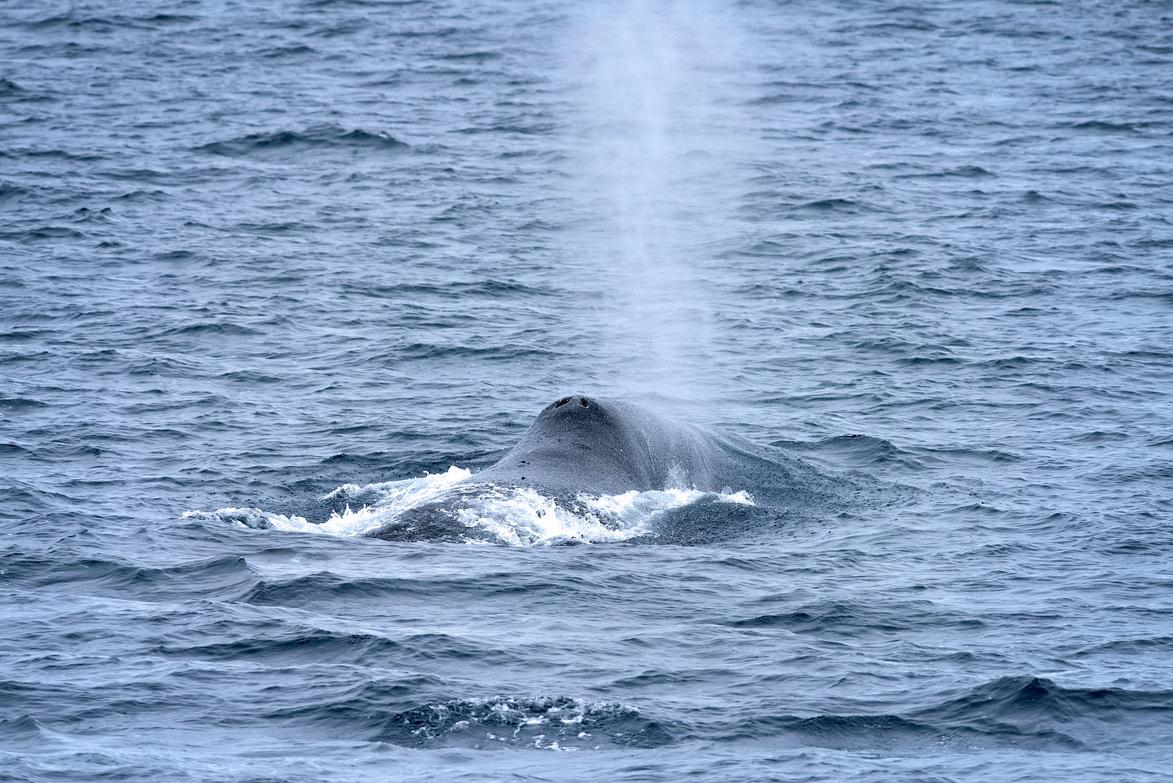
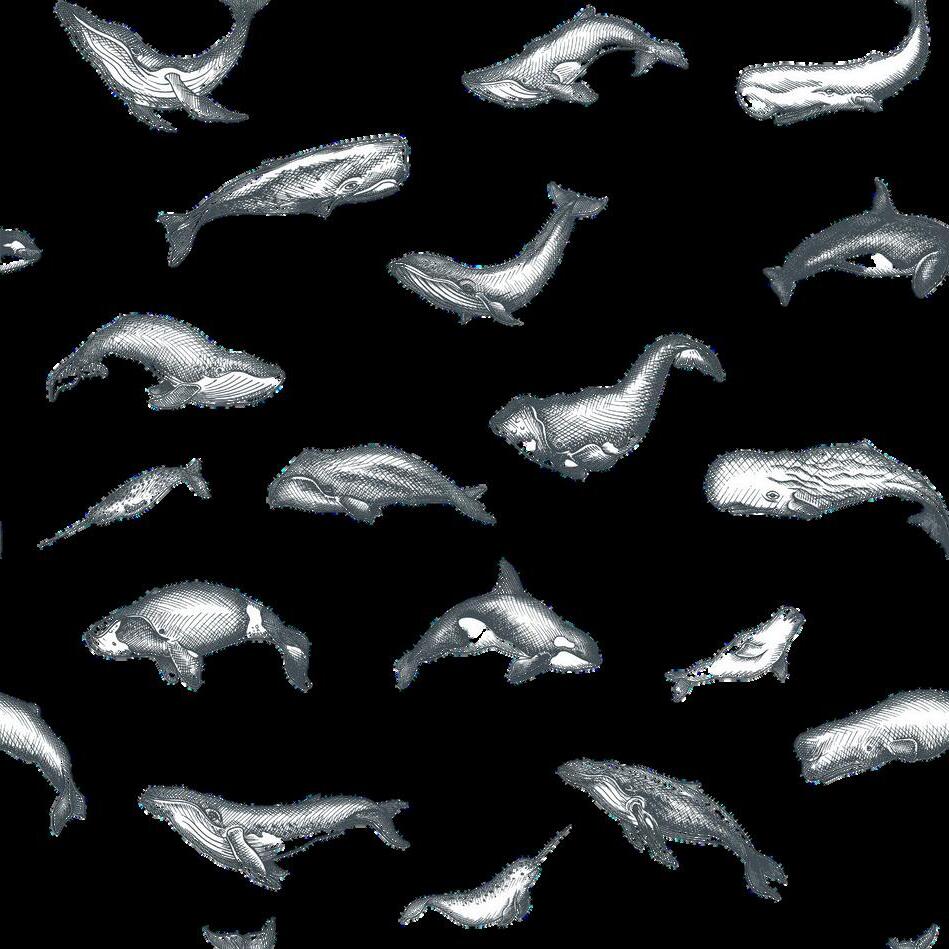
This project aims to understand Foxe Basin’s bowhead population abundance and movement patterns, as well as develop a photo-identification catalogue of individuals that will be used to track the population's composition, calving rates, and body condition To complete this research, 15 satellite tags will be deployed to track whale movements Additionally, biopsy samples consisting of both skin and blubber will be collected to update population abundance estimates, and drones will be used to collect high-resolution aerial photographs of bowhead whales Whale scat and ocean measurements will be opportunistically collected to better understand the feeding ecology of bowhead whales This project has been funded by the NWRT in the past
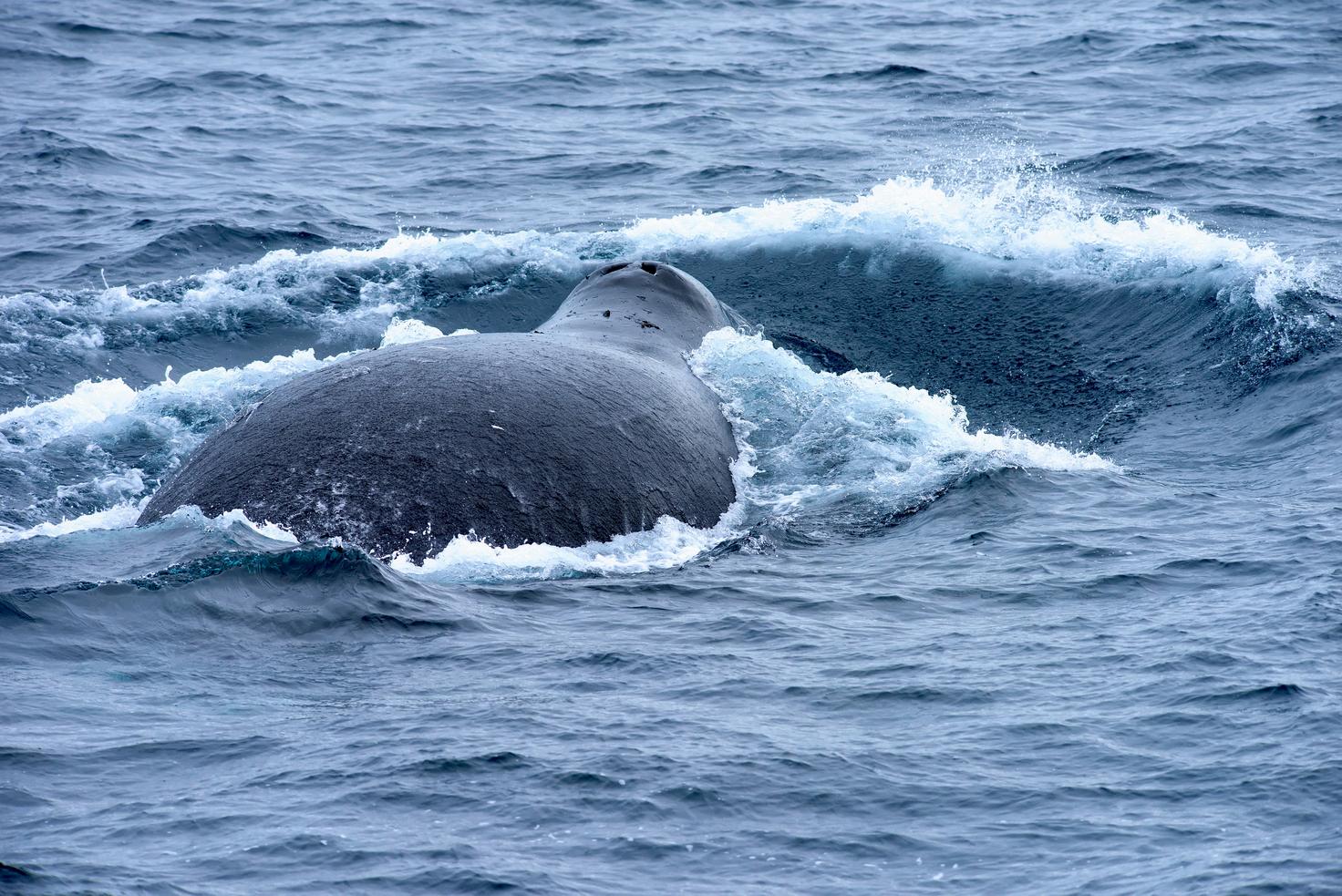
photoid, and biopsy
ᐳᕆᐊᓐᑦᔭᖕ - ᐃᖃᓗᓕᕆᔨᑦ ᐃᒪᕐᒥᐅᑕᓕᕆᔨᓪᓗᑲᓇᑕᒥ
BrentYoung - Fisheries and Oceans Canada
ᓄᓇᓖᑦᓇᒻᒥᓂᖅᖃᐅᔨᓴᕐᓂᖏᑦᐊᐃᕕᑦᓇᒦᒻᒪᖔᑕᐊᒻᒪᓗ ᐊᑕᐅᓯᕐᓃᖓᕐᑐᑦᖃᓄᐃᓕᖓᓂᖏᑦ
community-based research on walrus distribution and stock structure
ᑯᐊᕆᒫᑎᐅᔅ - ᐃᖃᓗᓕᕆᔨᑦᐃᒪᕐᒥᐅᑕᓕᕆᔨᓪᓗᑲᓇᑕᒥ
Cory Mathews - Fisheries and Oceans Canada |
ᒫᓐᓇᐱᑕᖃᕐᑐᑦᐊᑕᐅᓯᕐᓃᖔᕐᑐᑦᓇᓗᓇᐃᔭᕐᑕᐅᓂᖏᑦᕿᑎᖓᓂᐅᑭᐅᕐᑕᕐᑑᑉᐊᐃᕖᑦᐊᑭᓂᐊᕐᑕᑦ ᑖᓐᓇ ᑲᒪᒋᔭᖅᖃᐅᔨᒐᓱᐊᕈᑦᐃᒪᐃᒻᒪᖔᑦᐅᓪᓗᒥᐱᑕᖃᕐᑐᑦᐊᒻᒪᓗᐊᑕᐅᓯᕐᓃᖓᕐᑐᑦᓇᓗᓇᐃᔭᕐᑕᐅᓂᐅᖏᑦ ᓈᒻᒪᒻᒪᖔᑕᐋᕿᓱᕐᓗᒋᑦᖃᖓᑦᑕᕐᑎᑕᐅᒪᔪᒃᑯᑦᓇᓗᓇᐃᒃᑯᑏᑦᓅᑦᑕᕐᓂᖏᓐᓂᒃᕿᒥᒡᕈᓗᓂᐊᒻᒪᓗᓄᐊᑦᓯᓗᓂ ᓂᕿᖏᓐᓂᒃᐱᑕᖃᕐᒪᖔᑦᐊᒻᒪᓗᓇᑭᙶᕐᓂᖏᓐᓂᒃᕿᒥᒡᕈᓗᓂ ᐱᑕᖃᕐᑐᖅᑐᕌᕐᒥᔪᖅᐊᖏᓪᓕᒋᐊᕐᓗᒍ
ᖃᐅᔨᓴᕐᑎᒻᒪᕇᑦᑲᒪᒍᓐᓇᕐᓂᖏᑦᐅᑭᐅᕐᑕᕐᑐᒥᐅᕘᓇᐱᓕᒻᒪᓴᕐᓗᒋᖃᐅᔨᓴᕐᑐᓂᐃᑲᔪᕐᑐᑦᐊᒻᒪᓗᓄᓇᓖᑦ ᓇᒻᒥᓂᖅᖃᐅᔨᒪᒐᓱᐊᕐᓂᖏᓐᓄᑦᐱᓕᕆᔨᑦᐊᐃᕝᕕᐊᐸᑦᑐᓂᓄᓇᓕᓐᓂ ᑖᓐᓇᑲᒪᖏᔭᖅᑮᓇᐅᔭᖃᕐᑎᑕᐅᓯᒪᔪᖅ ᐅᕘᓇ NWRT ᐊᓂᒍᕐᓯᒪᔪᒥ

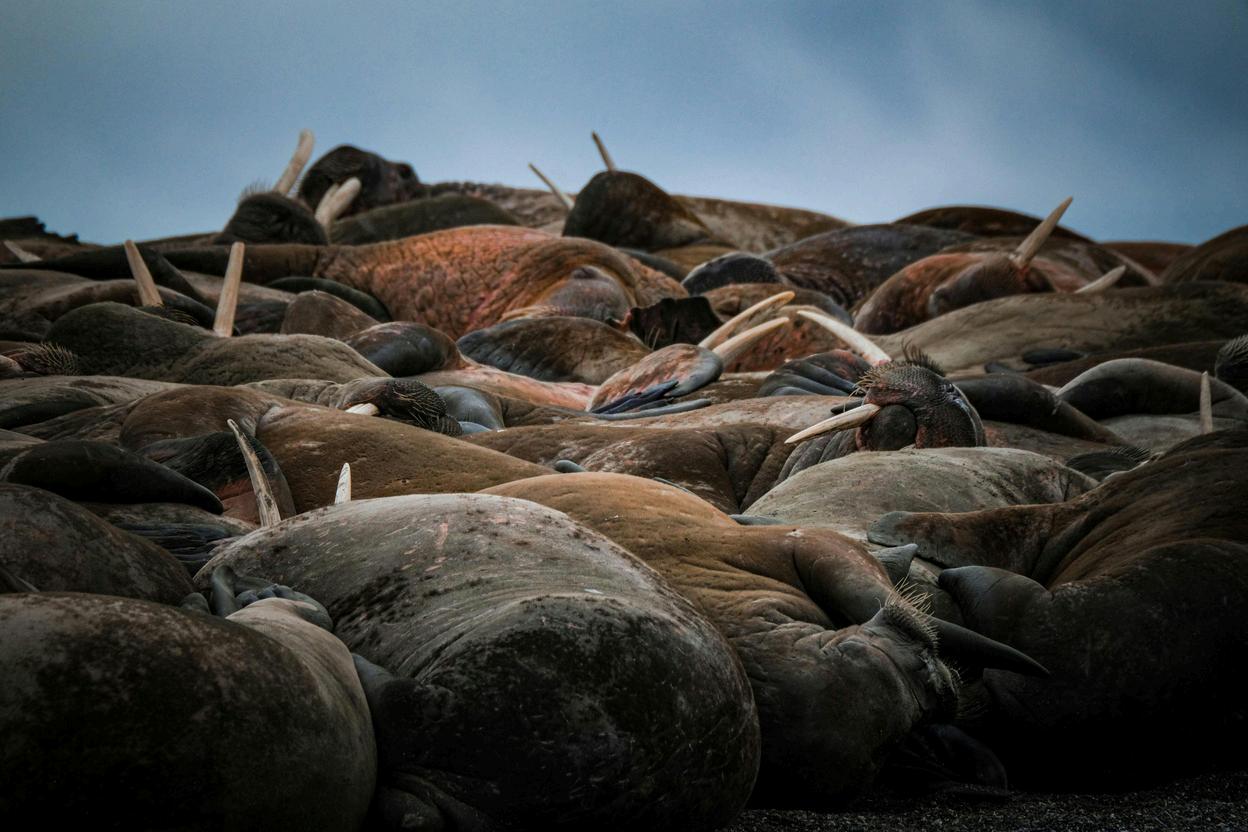

The current stock designations of theCentralArctic walrus population are contested This project aims to determine whether current designations are appropriate by deploying satellite tags for movement analysis and collecting tissues for trace elements, stable isotope, and genetic analysis The program also aims to build science capacity in the North through the training of research assistants and community-based monitoring personnel in walrus-harvesting communities This project has been funded by the NWRT in the past
ᒥᒃᓴᐅᓴᓐᓂᖅᖃᓄᐃᓪᓗᐊᕐᓂᖏᓐᓂᒃᐊᒥᑦᑐᖅᒥᓇᓄᐃᑦ
ᐊᓕᓴᐴᕼᐋᕐᑦ - ᓄᓇᕗᑦᒐᕙᒪᒃᑯᑦ
Alyssa Bohart - Government of Nunavut |
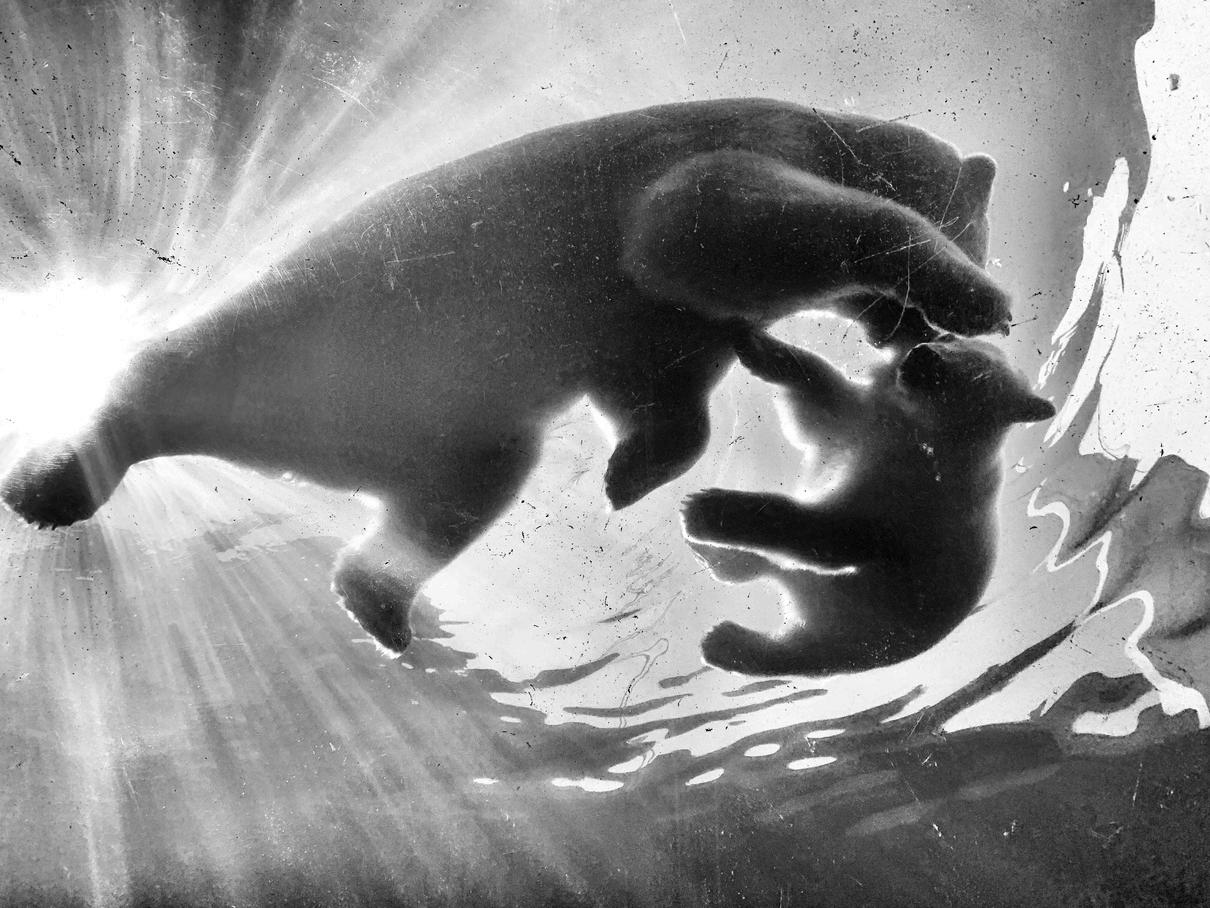
ᓄᑖᖑᓂᕐᐹᑦᐊᒥᑦᑐᖅᒥᓇᓄᕐᓂᒃᒥᒃᓴᐅᓴᒍᑏᑦ ᐱᔭᐅᓚᐅᕐᑐᑦᐅᕙᙵᑦᒫᓐᓇᐱᑐᖃᐅᓕᕐᑐᓂᒃ ᖃᐅᔨᓴᕈᑎᓂᒃᑲᒪᒋᔭᑦᒫᓂ 2009 ᐊᒻᒪᓗ 2010. ᑖᓐᓇ ᑲᒪᒋᔭᖅᑐᕌᕋᓱᐊᕐᑐᖅᐱᑕᖃᕐᑎᓪᓗᒋᑦ
ᓄᑖᙳᕆᐊᕐᓯᒪᔪᑦᒥᒃᓴᐅᓴᒍᑏᑦᐊᒻᒪᓗᐱᒋᐊᕐᓗᒍ ᓅᑦᑕᕐᓂᖏᓐᓂᒃᖃᐅᔨᓴᕐᓂᖅᑐᑭᓯᑦᓯᐊᕋᓱᐊᕐᓗᒍ ᐊᔾᔨᒌᙱᓐᓂᖏᑦᒫᓂᐊᒥᑦᑐᖅᒥᐊᒻᒪᓗᖃᓂᒋᔭᖓᓂ ᐱᑕᖃᕐᑐᑦ ᖃᐅᔨᓴᕐᑏᑦᑲᒪᓂᐊᕐᑐᑦᐅᖓᓯᒃᑐᒥᒃ ᖃᖓᑕᔫᒃᑯᑦᖃᐅᔨᓴᕐᓂᕐᓂᒃᓄᐊᑦᓯᓗᑎᒃ ᖃᓄᐃᓪᓗᐊᕐᓂᖏᓐᓂᒃᑎᑎᖃᓂᒃ ᓱᓕᑦᑕᐅᖅ, ᓄᐊᑦᓯᓂᐊᕐᑐᑦᐅᑭᑕᓂᒃᐊᒻᒪᓗᐃᓕᐅᖃᐃᓗᑎᒃ ᒥᖁᖏᓐᓂᒃᓇᑦᑎᕕᓐᓂᒃᓄᐊᓪᓗᒋᑦᓇᑭᙶᑉᓂᖏᑕ ᑐᓴᕋᑦᓴᓂᒃ, ᑐᑭᓯᒍᑕᐅᓂᐊᕐᑐᖅᓇᓗᓇᐃᕐᓯᒪᔪᑦ ᑕᑯᔭᐅᒃᑲᓂᕐᓂᖏᓐᓂᒃᖃᐅᔨᓴᕐᓗᒋᑦᓇᓄᐃᑦ ᐃᓅᒍᓐᓇᕐᓂᖏᑦᐊᒻᒪᓗ ᓅᑦᑕᕐᓂᖏᑦᐃᓗᐊᓂ ᑭᕙᓪᓕᐅᑉᑕᓯᐅᔭᕐᔪᐊᖓᑕ
The most recent Foxe Basin polar bear population estimate was derived from now outdated surveys conducted in 2009 and 2010 This project aims to provide an updated abundance estimate and initiate a movement study to better understand the dynamics between Foxe Basin and neighbouring subpopulations The researchers will conduct aerial surveys to gather abundance data Furthermore, they will collect biopsies and install hair-snare stations to collect genetic information, which will inform mark-recapture models to investigate bear survival and movement within the Hudson Bay complex
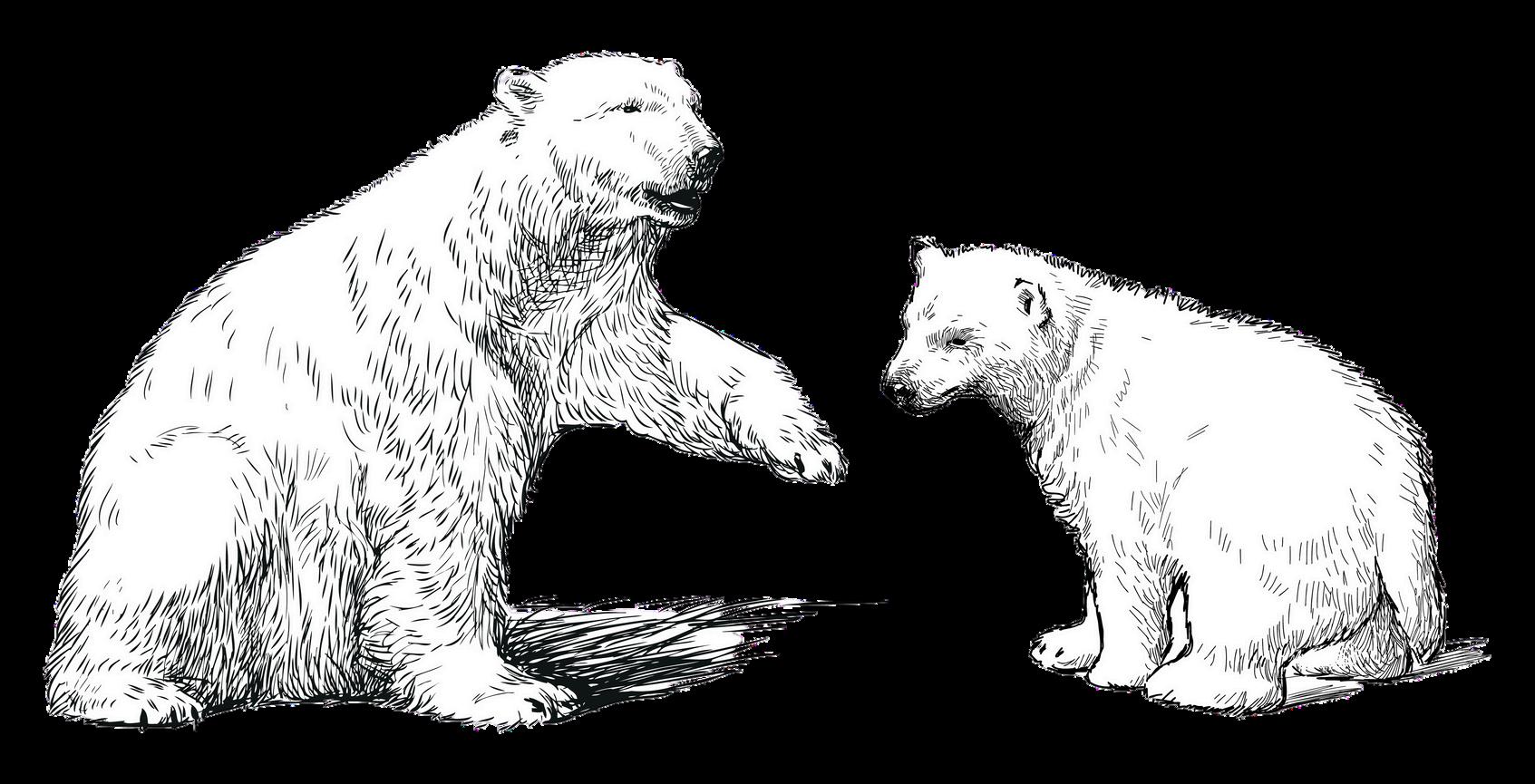

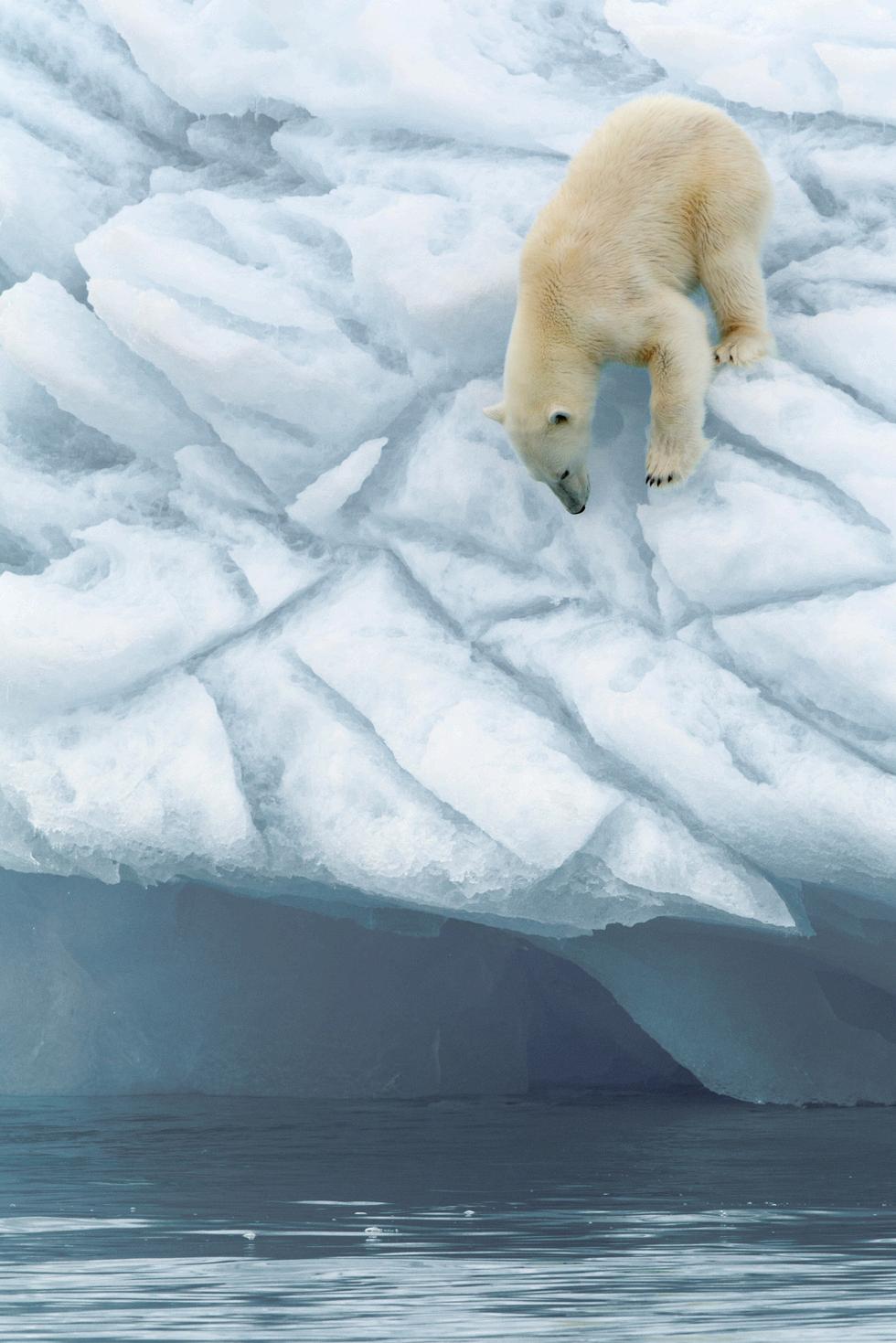
ᑭᕙᓪᓕᖅᒥᐊᒪᕈᕐᓂᒃ
ᖃᐅᔨᒪᒐᓱᐊᕐᓂᖅᐊᑐᕐᓗᒋᑦ
ᖃᖓᑦᑕᕐᑎᑕᐅᒪᔪᒃᑯᑦᑐᓵᒍᑏᑦ
ᐊᒻᒪᓗᐊᖑᓇᓱᒃᑏᑦᐱᔭᖏᑦ
kivalliq wolf monitoring using satellite telemetry and hunter harvest
ᒪᓕᒃᐊᕙᓐ - ᓄᓇᕗᑦᒐᕙᒪᒃᑯᑦ MalikAwan - Government of Nunavut |
ᑐᒃᑐᐃᑦᒫᓂᓄᓇᕗᑦᒥᐊᑐᕐᓯᒪᔪᑦᐱᐅᙱᑦᑐᒥᒃᐱᑕᖃᕐᑐᑦ ᐃᓄᐃᓴᓪᓕᕙᓪᓕᕐᓂᖏᓐᓂᒃ ᐃᑲᔪᕈᑕᐅᓗᓂᒥᑭᓪᓕᒋᐊᕐᓗᒍ ᐃᓄᐃᓴᓪᓕᕙᓪᓕᐊᓂᖏᑦᐊᒻᒪᓗᐃᑲᔪᕐᓗᒋᑦᐱᑕᖃᕐᑐᑦ ᐱᕈᕐᓴᑲᓐᓂᕐᓂᖏᑦ, ᒐᕙᒪᓐᑯᑦᓄᓇᕗᑦᒥᐱᒋᐊᓚᐅᕐᑐᑦ
ᐊᒪᕈᕐᓂᒃᐊᖑᓇᓱᓐᓂᕐᒥᒃᐱᑕᓕᓐᓂᒃᐃᓄᐃᓴᓪᓕᒋᐊᕐᓗᒋᑦ ᐊᑦᑐᐃᓂᖏᑦᐊᒪᕈᐃᑦᓂᕿᑐᕐᑏᑦᑐᒃᑐᓂᒃ ᑐᕌᕐᑕᐅᔪᖅ
ᑖᑦᓱᒧᖓᑲᒪᒋᔭᒧᑦᐊᖏᓪᓕᒋᐊᕆᓂᖅᑐᑭᓯᒍᑎᓂᒃᐊᒪᕈᐃᑦ ᓅᑦᑕᕐᓂᖏᓐᓂᒃᐃᓗᐊᓂᐊᒻᒪᓗᒪᑯᓇᓂᑐᒃᑐᐃᑦᑲᑎᒻᒪᔪᑦ ᖃᐅᔨᓴᕐᒥᓗᒍᐅᖓᓯᒌᓐᓂᖏᑦᐊᒻᒪᓗᖃᓂᒌᓐᓂᖏᑕ ᖃᓄᐃᓐᓂᖏᑦᓂᕿᑐᕐᑏᑦ ᓂᕆᔭᑦᑲᑐᑎᑦᑕᕐᓂᖏᓐᓂᒃ
ᐊᒪᕈᕐᓂᒃ, ᐅᒥᒻᒪᓐᓂᒃ, ᐊᒻᒪᓗᑐᒃᑐᓂᒃᐃᓗᐊᓂᐅᐸᒐᖏᑕ ᖃᒪᓂᕐᔪᐊᖅᐊᒪᓗᐅᐊᓐᓇᖓᓂᐃᓗᐃᓕᐅᑉᑐᒃᑐᐃᑦ ᑭᕙᓪᓕᖅᒥ
ᖃᐅᔨᓴᕐᑐᑦᐃᓕᐅᖃᐃᓂᐊᕐᑐᑦ 20 GPSᓂᒃ ᖁᖓᓯᕈᕐᓂᒃᐊᒪᕈᕐᓄᑦᓄᐊᓪᓗᒋᑦᑎᑎᕋᕐᓯᒪᔪᑦ ᓅᑦᑕᕐᓂᖏᓐᓂᒃᖃᓂᒋᔭᖓᓂᑐᒃᑐᐃᑦᓇᔪᒐᖏᑕᐊᒻᒪᓗ ᓄᒡᕋᓕᐅᕐᕕᖏᑕ, ᐊᒻᒪᓗᑦᑕᐅᖅᐱᓗᑎᒃᖃᐅᔨᓴᕋᑦᓴᓂᒃ ᐊᙳᑕᐅᔪᓂᒃᐊᒪᕈᕐᓂᒃ ᑎᑎᕋᕐᓯᒪᔪᑦᓄᐊᑕᑦ
ᐊᔪᙱᒍᑕᐅᓂᐊᕐᑐᑦᑲᑐᔾᔨᔪᑦᖃᐅᔨᓴᕐᓗᑎᒃᐊᒪᕈᐃᑦ
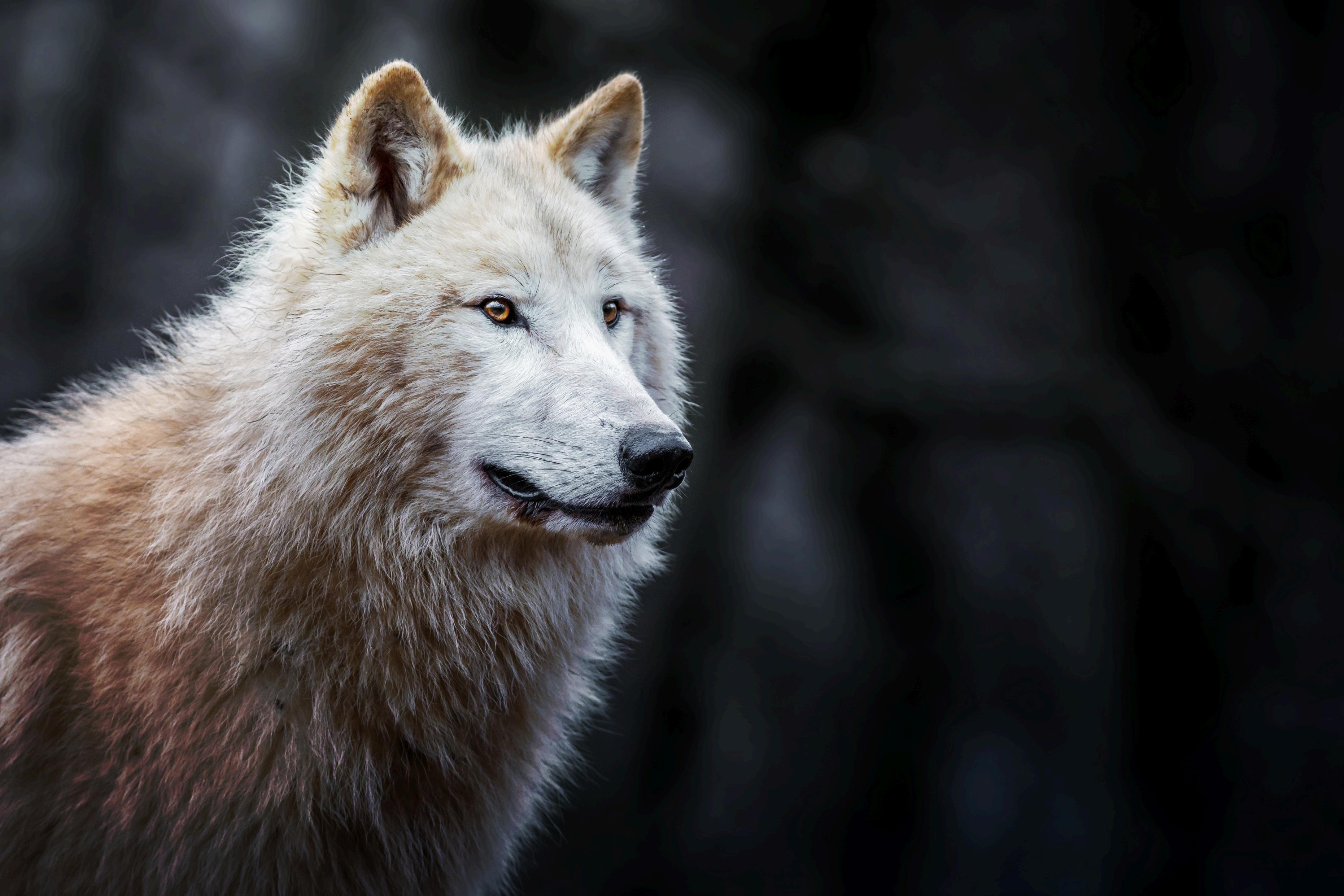
Caribou herds across theTerritory have been experiencing troubling population declines To help mitigate the decline and support population regrowth, theGovernment of Nunavut initiated a wolf hunting program to reduce the impacts of wolf predation on caribou The goal of this project is to enhance understanding of wolf movements within and between caribou herds while also examining the spatial and temporal dynamics of predator-prey interactions involving wolves, muskox, and caribou within the range of the Qamanirijuaq and Northeast Mainland caribou herds in the Kivalliq region The research team will deploy 20GPS collars on wolves to gather data on their movements within the caribou herd ranges and calving grounds, and will also receive samples from harvested wolves The data collected will allow the team to examine wolf movement, predatory behaviour, survival, and recruitment

ᓄᑖᖑᓂᕐᐹᑦᖃᓄᐃᓪᓗᐊᕐᓂᖏᓐᓂᒃᖃᐅᔨᓴᕈᑏᑦᐅᒥᒃᒪᓐᓂᒃ ᑮᓕᓂᕐᒥ (ᐊᐃᓚᑦᓯᒡᕕᐅᔪᖅ MX07) ᑲᒪᒋᔭᐅᓚᐅᕐᑐᖅᒫᓂ
2013-2014 ᐊᒻᒪᓗᐊᓚᒃᑲᐃᓪᓗᓂᐱᑕᖃᕐᑐᑦ
ᐃᓄᐃᓴᓪᓕᕙᓪᓕᕐᓂᖏᓐᓂᒃᐅᕙᙵᑦᓯᕗᓪᓖᑦᒥᒃᓴᐅᓴᒍᑏᑦ ᖃᓄᐃᓐᓂᖏᑦᐅᒥᒃᒪᐃᑦ, ᐊᒥᓱᕈᕐᐸᓪᓕᐊᓂᖏᑦᐊᖤᐃᑦ ᐊᒻᒪᓗᐊᒪᕈᐃᑦᑕᑯᔭᑦ, ᐱᓱᒃᐸᓐᓂᖏᑦᐅᒥᒃᐃᑦᕿᒪᐃᓪᓗᑎᒃ ᕿᑭᕐᑕᒥᒃᐃᓗᐃᓕᕐᒧᑦ, ᐊᒻᒪᓗᐃᓄᐃᓴᑦᑑᓂᖏᑦᑕᑯᔭᑦ
ᑖᕙᓂ 2020 ᐊᒻᒪᓗ 2023
ᖁᖅᓗᖅᑑᖅᒥᖃᐅᔨᓴᕐᑐᓂᒫᓐᓇ
ᐃᓱᒫᓗᓐᓇᕐᑐᑦᑖᒃᑯᓄᖓᐅᒥᒃᒪᓐᓂᒃᐊᐅᓚᑦᓯᒡᕕᐅᔪᒥ ᑐᕌᕐᑕᐅᔪᖅᐆᒧᖓᑲᒪᒋᔭᒧᑦᐊᓚᒃᑲᐃᓂᖅᓄᑖᓂᒃ ᖃᓄᐃᓪᓗᐊᕐᒪᖔᑕᒥᒃᓴᐅᓴᒍᑎᓂᒃᒫᓂ MX07, ᐊᑐᕐᑕᐅᒍᓐᓇᕐᑐᑦᕿᒥᒡᕈᓗᒋᖅᑦᐅᓪᓗᒥᑲᑎᑦᑐᒋᑦ ᐊᔪᙱᑕᑦᐊᖑᓇᓱᒃᑕᐅᓂᕐᒥᒃᐊᒻᒪᓗᐃᒪᐃᑐᐃᓐᓇᕆᐊᓕᒃ ᐋᖀᓗᓂᓄᑖᓂᒃᐊᑐᓕᖁᔭᓂᒃᑕᐃᒪᐃᑦᓴᕆᐊᖃᕐᐸᑦ
ᐅᒥᒃᒪᐃᑦᐱᑕᖃᕐᑐᑦ ᒥᒃᓴᐅᓴᒃᑕᑦᑮᓕᓂᕐᒥ
ᓖᓴᒪᕇᓕᒃᓘᕐᒃᒃ - ᓄᓇᕗᑦᒐᕙᒪᒃᑯᑦ
Lisa Marie Leclerc - Government of Nunavut |
The most recent abundance surveys of muskox onVictoria Island (management unit MX07) were conducted in 2013-2014 and showed a population decline from the previous estimates Disease outbreak and general health, the increased number of grizzly bear and wolf sightings, the migration of muskox off the island to the mainland, and the low number of observations made during the 2020 and 2023 Dolphin and Union surveys are current concerns for this muskox management unit The goal of this project is to generate a new abundance estimate for MX07, which can be used to review the current total allowable harvest and potentially propose new recommendations if necessary
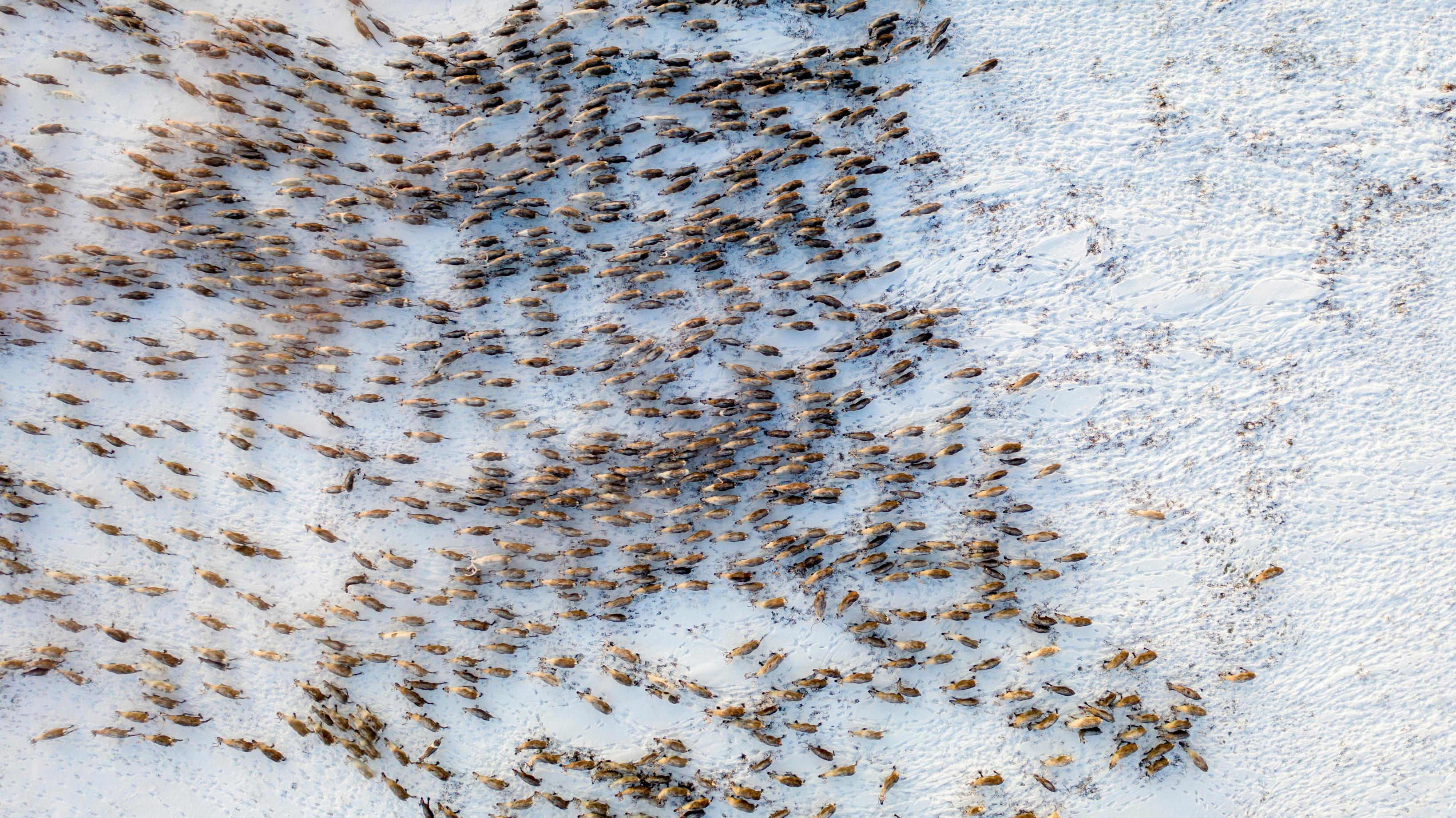
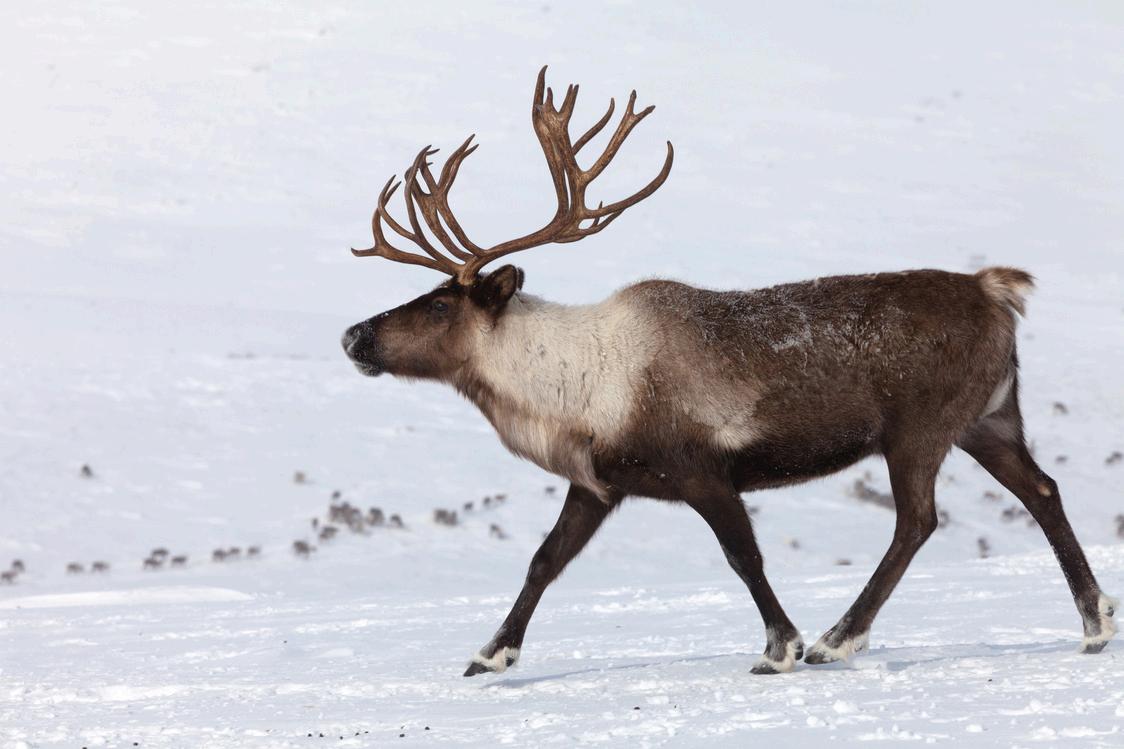
Daniel Shewchuk
JoshuaArreak

Vicky Jonston
Philip Putumiraqtuq
Steve Mapsalak
Simon Komangat
Simeonee Keenainak



